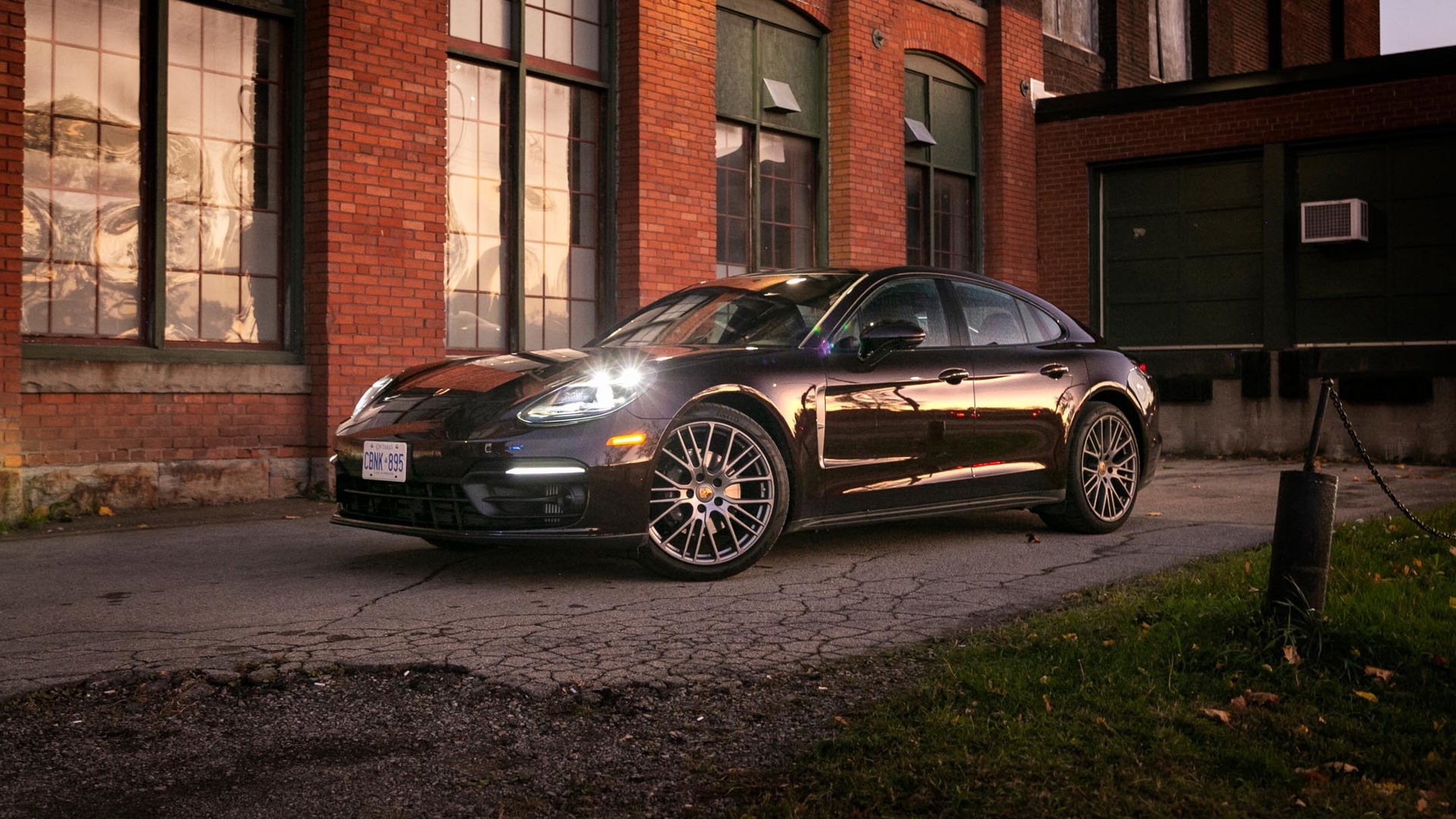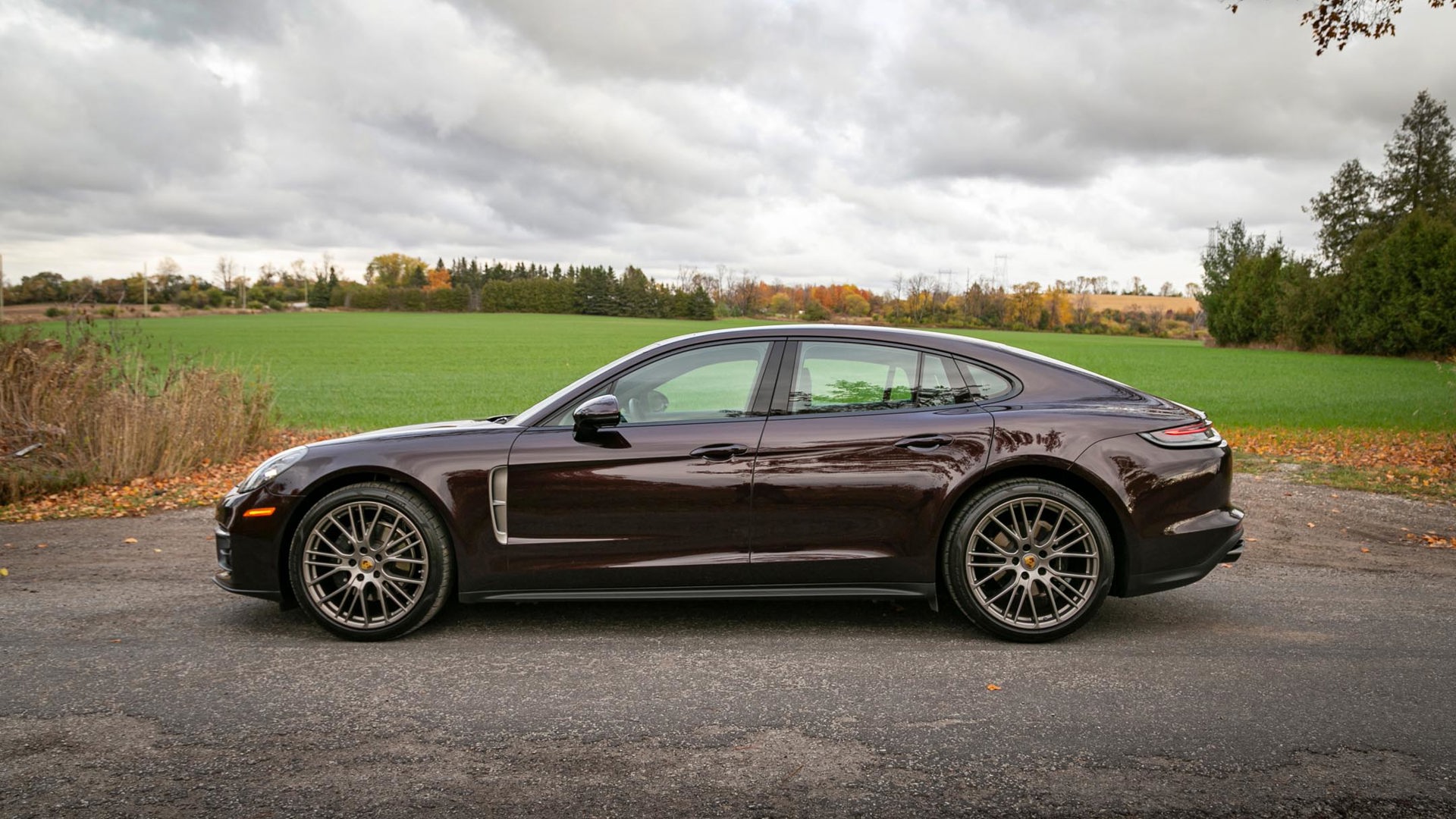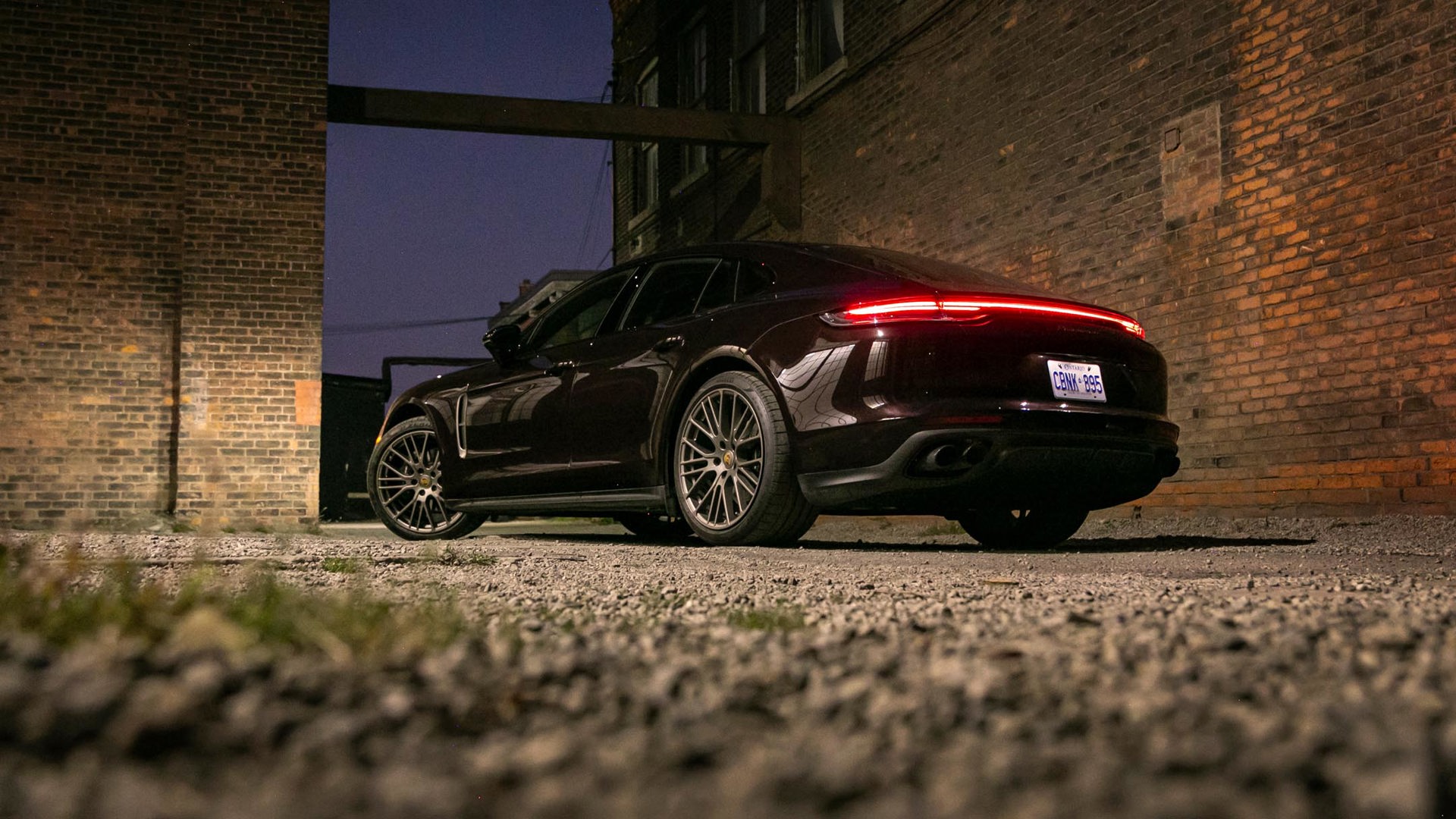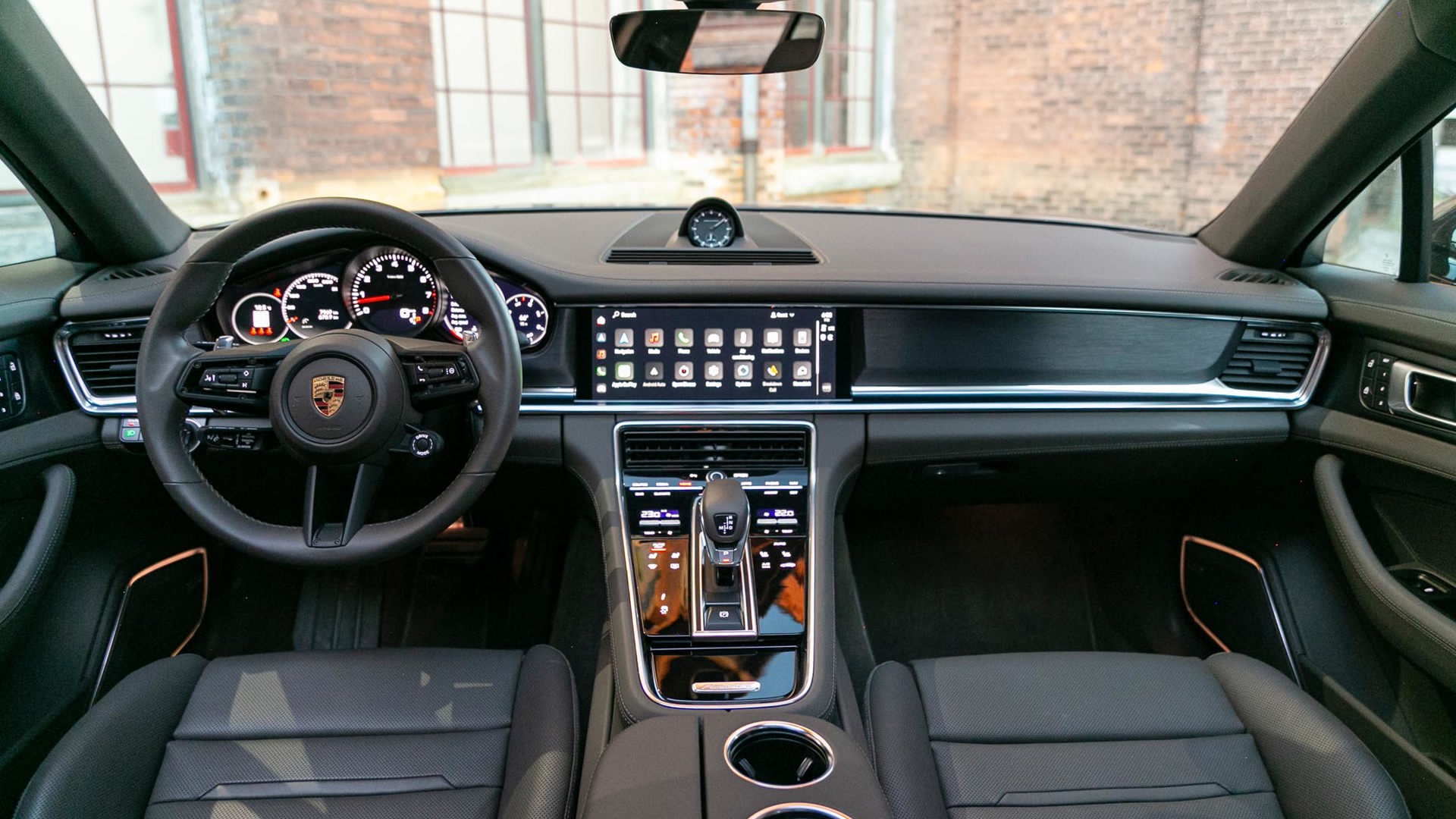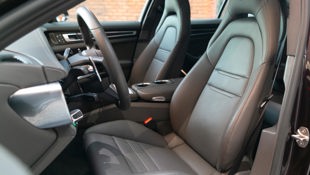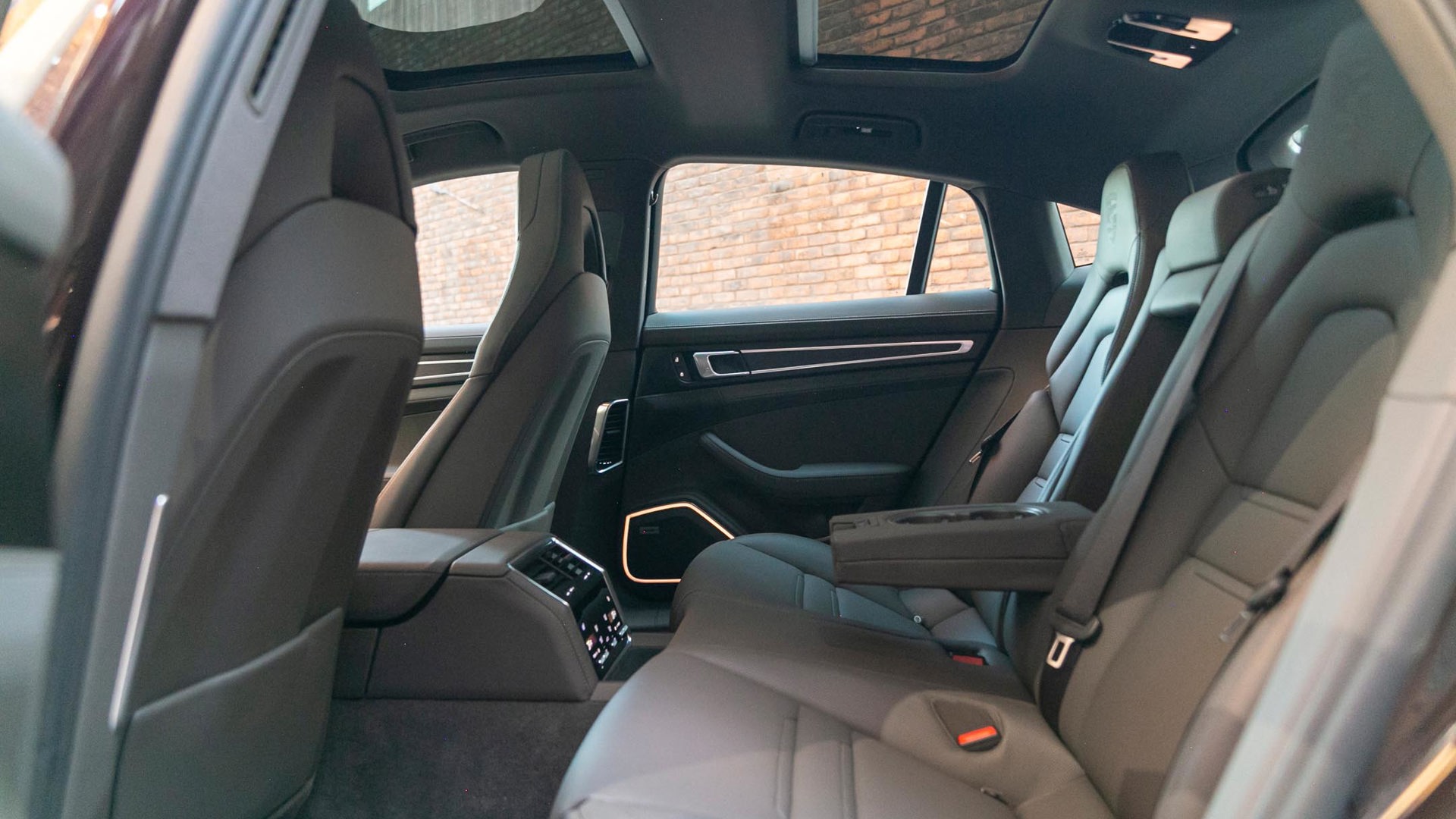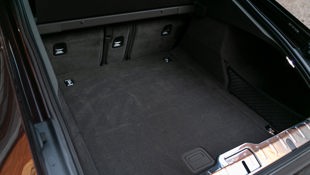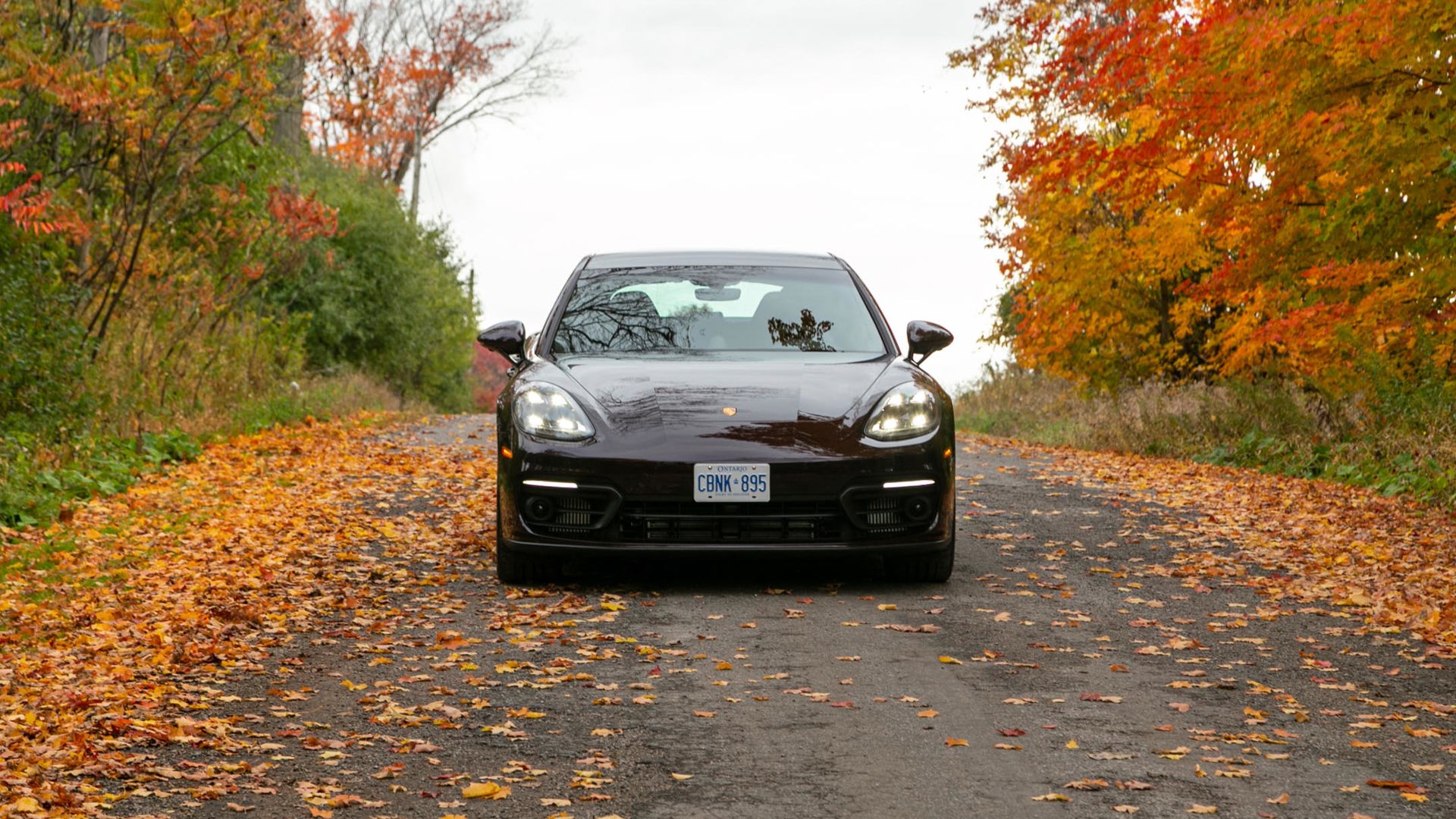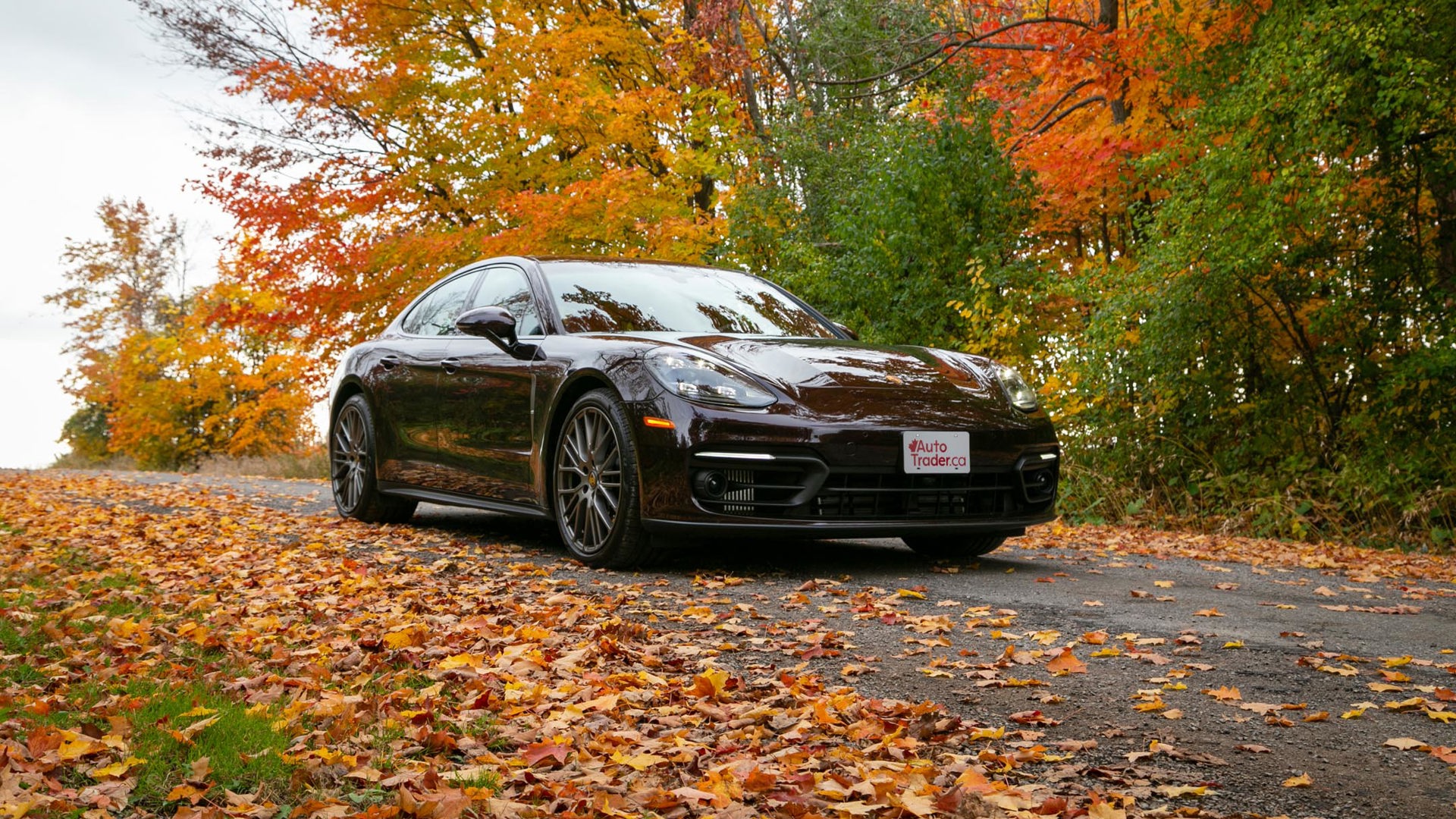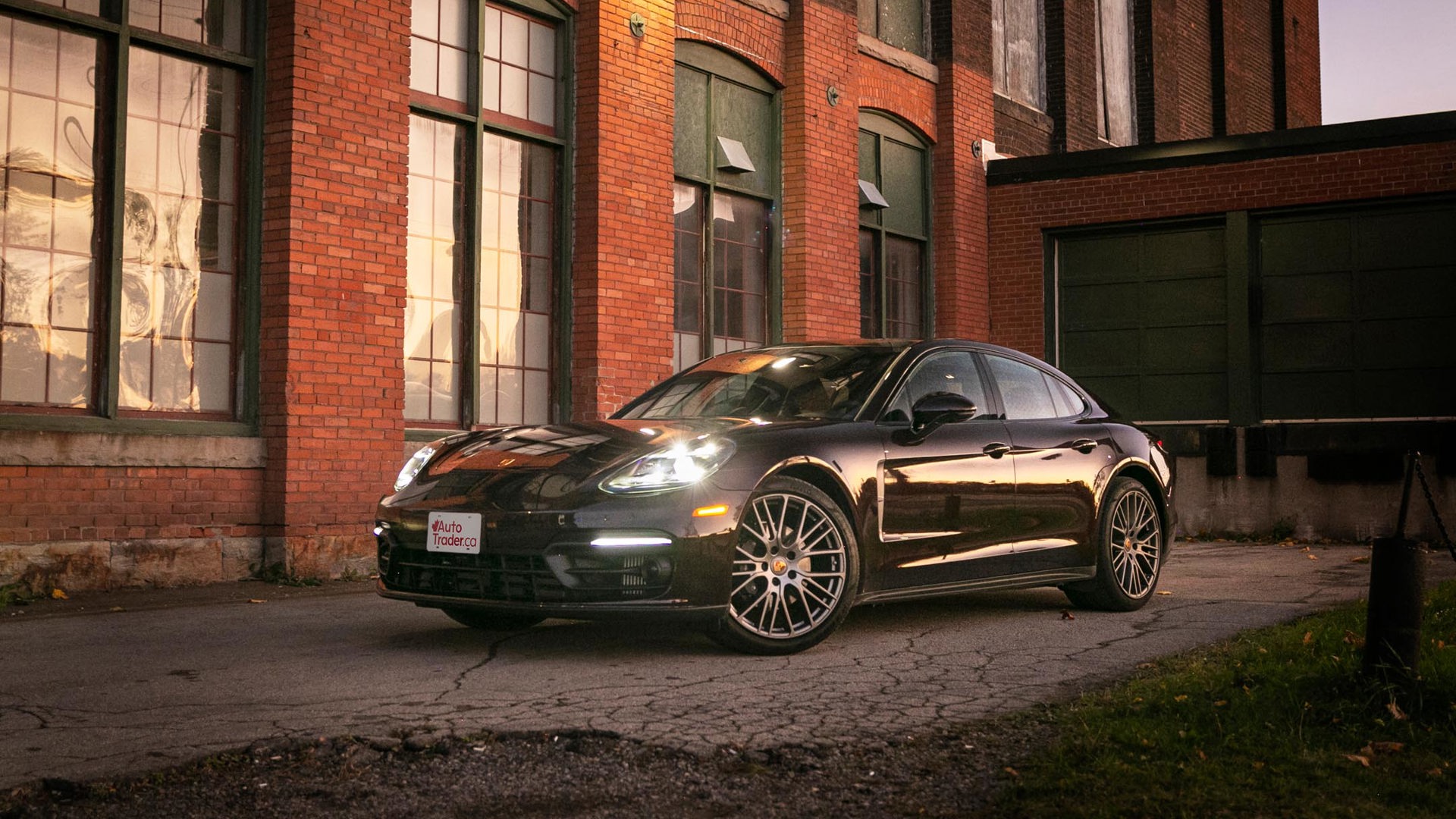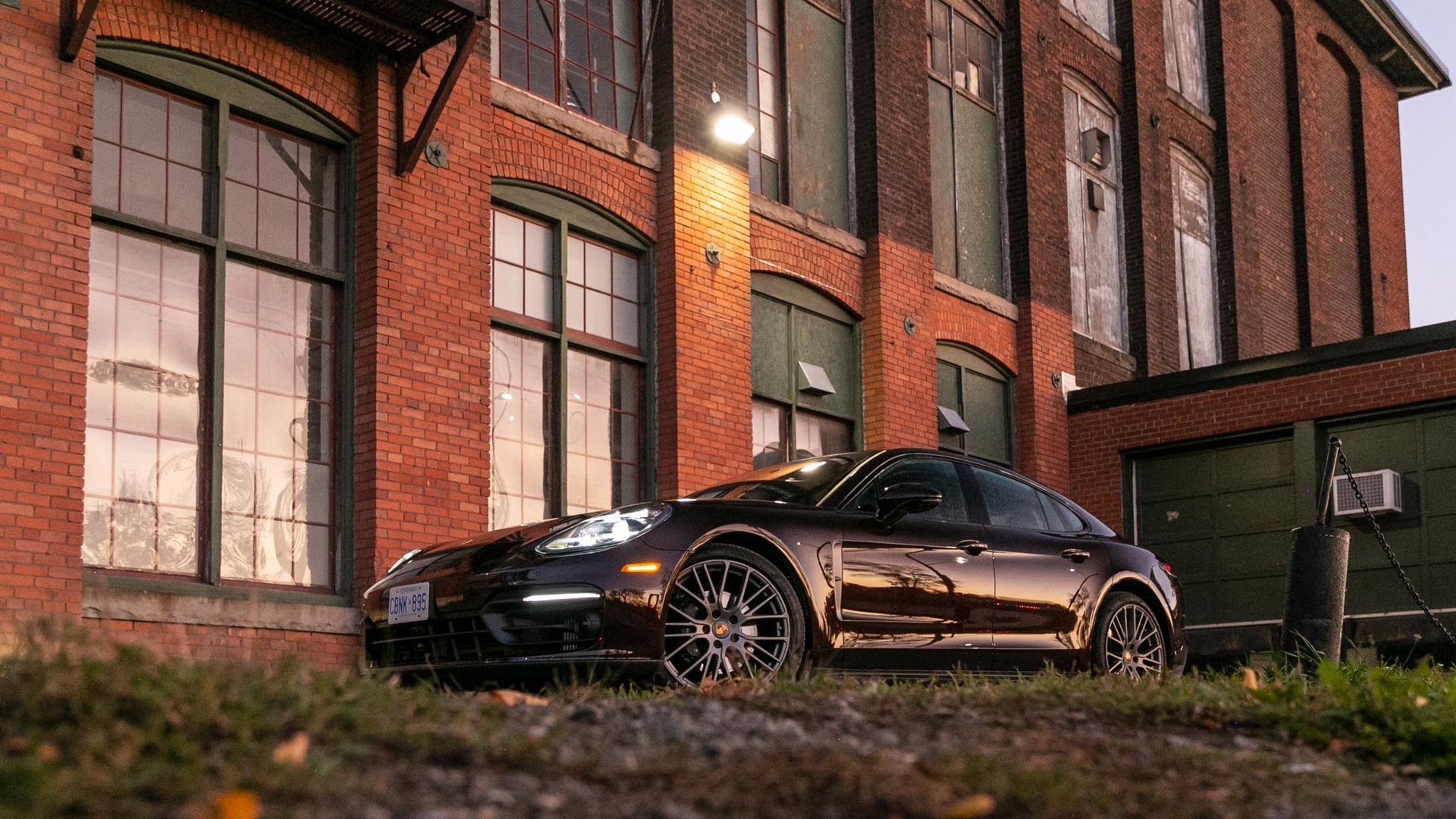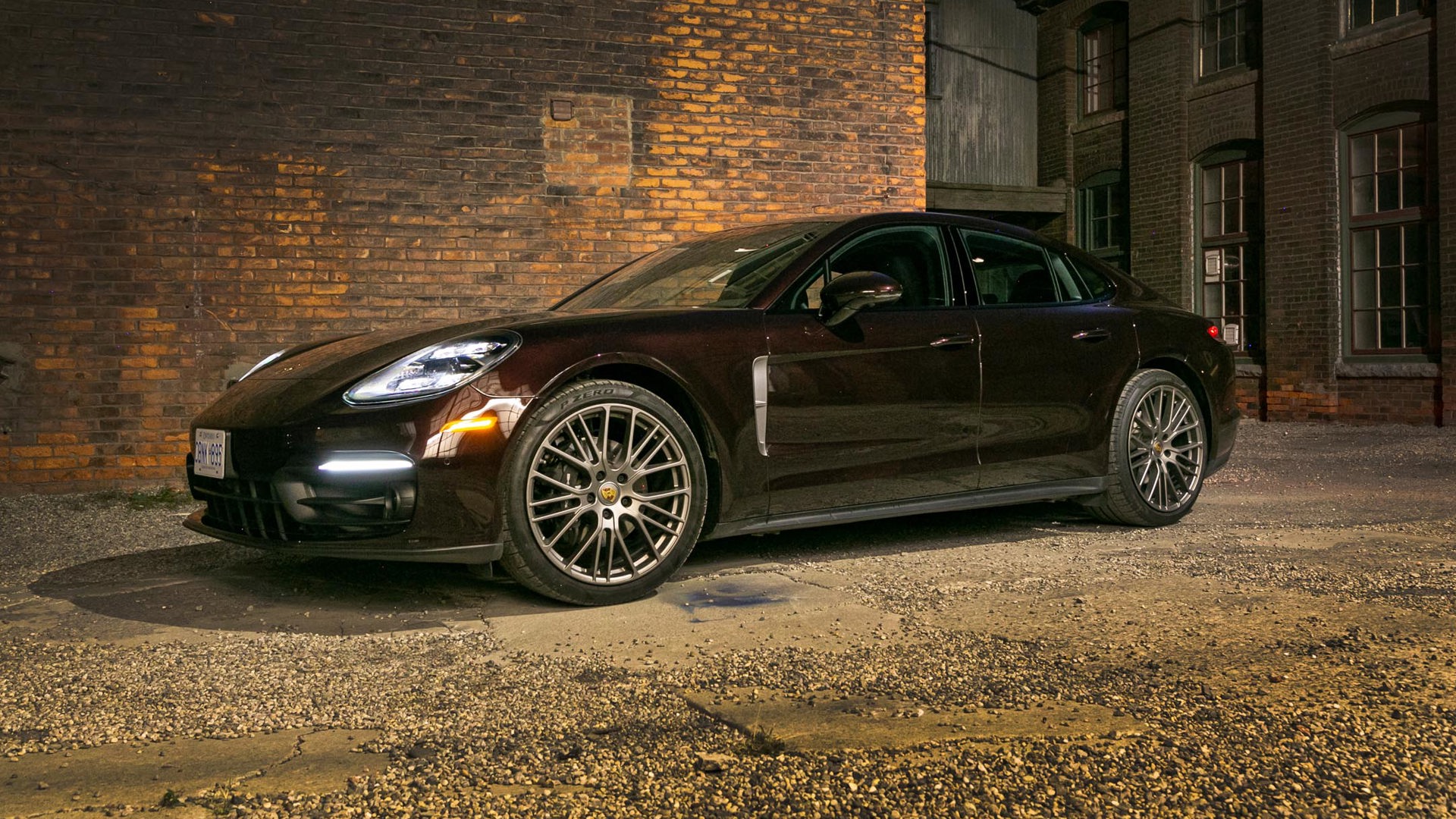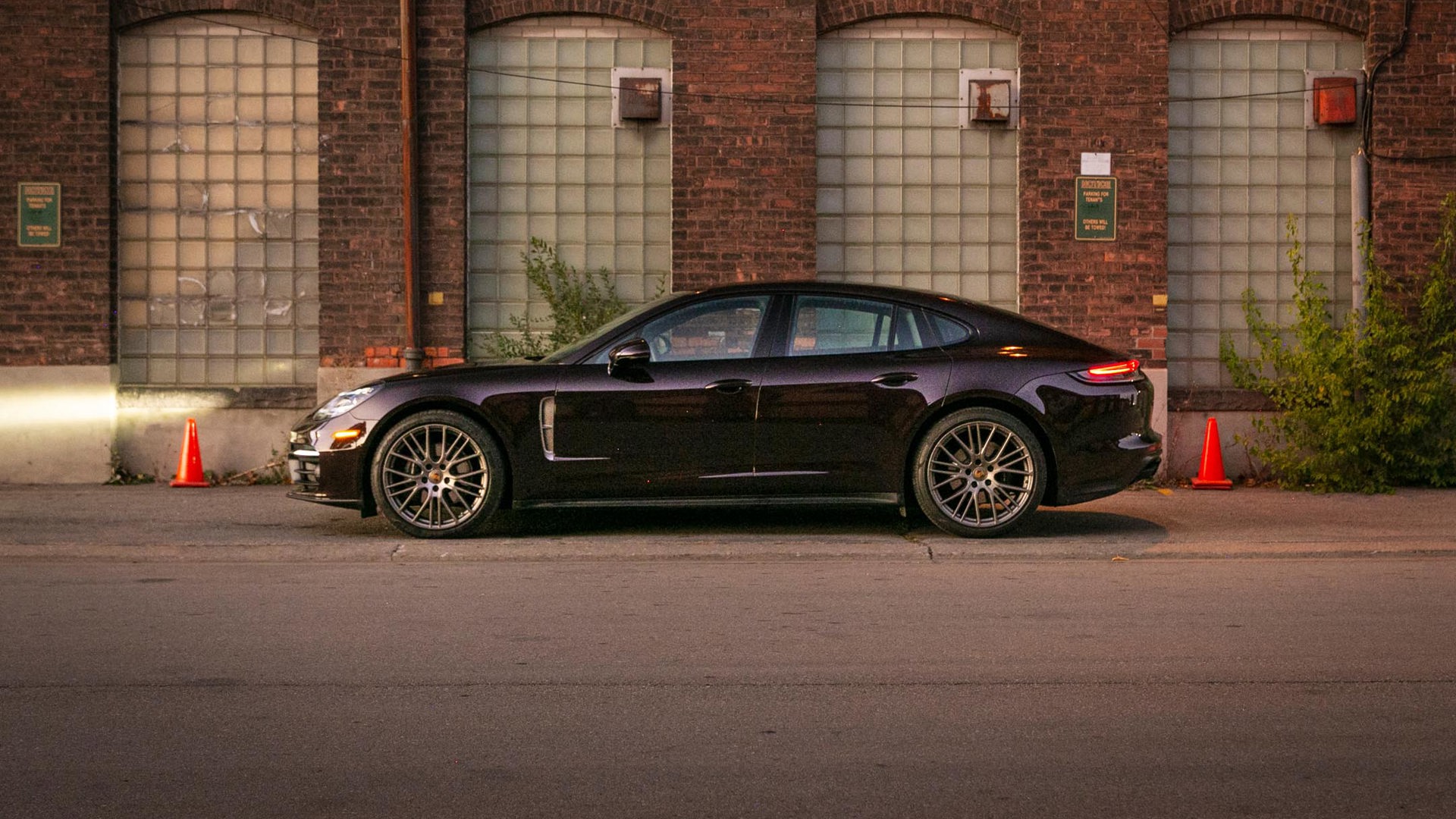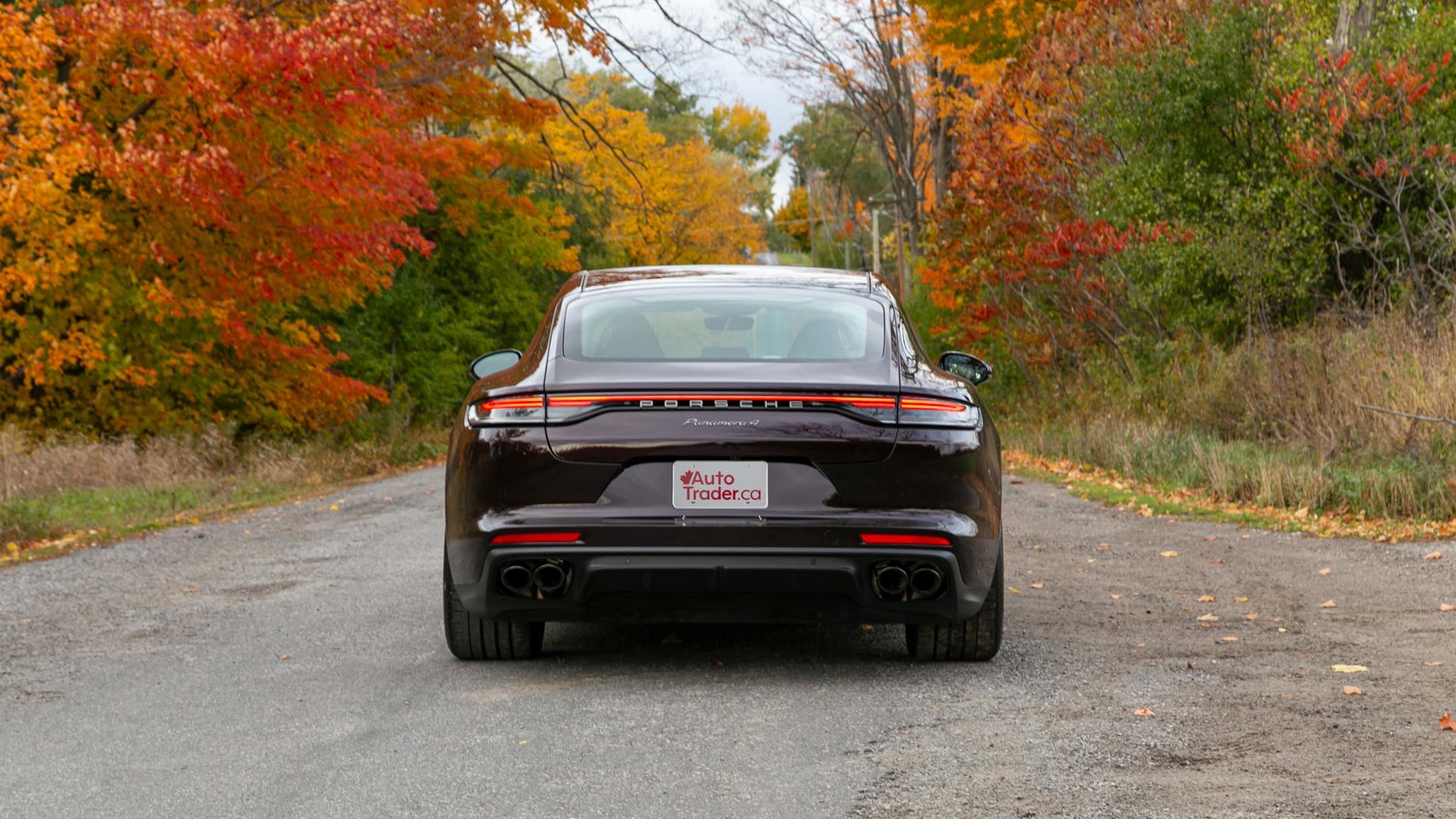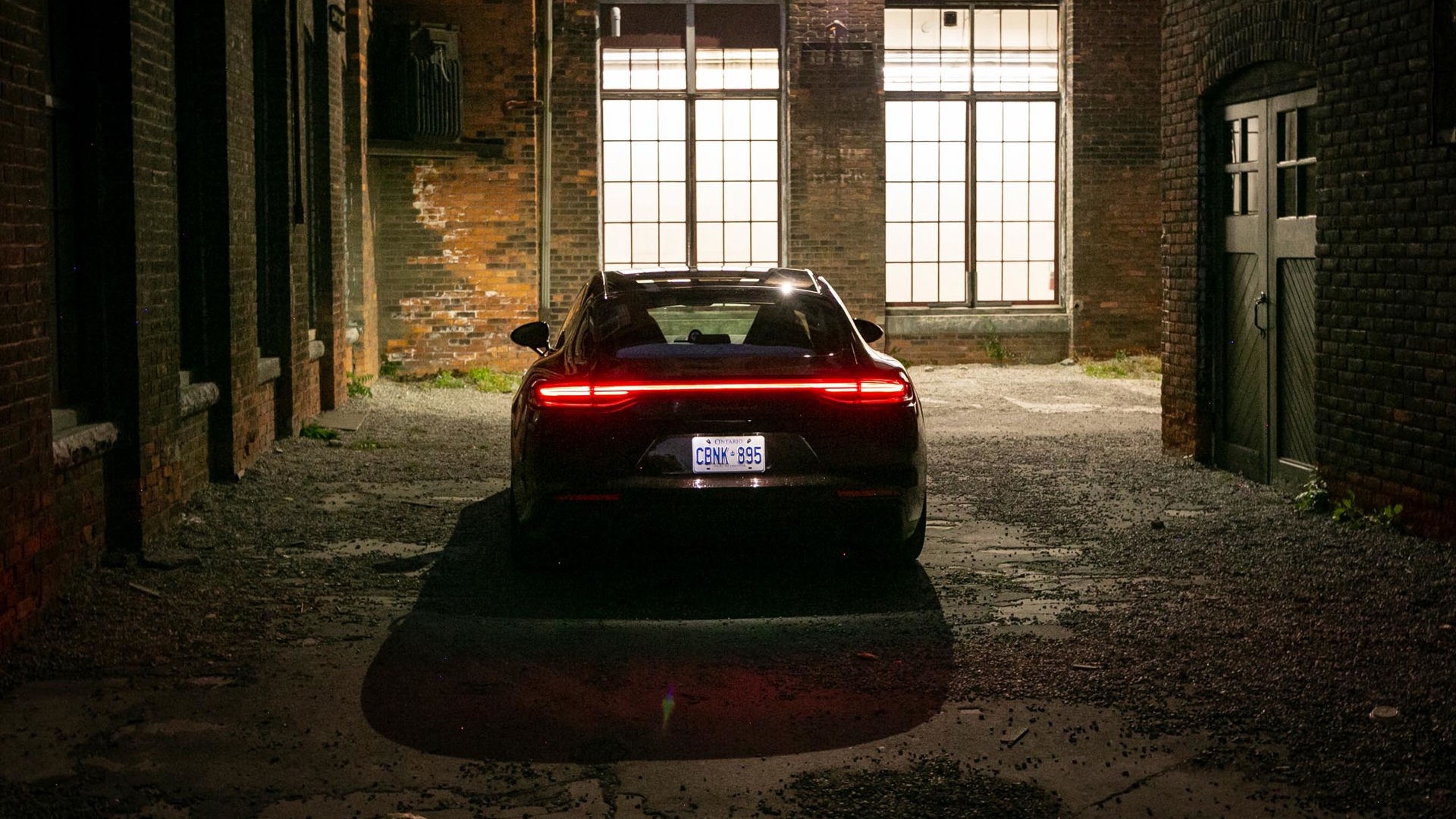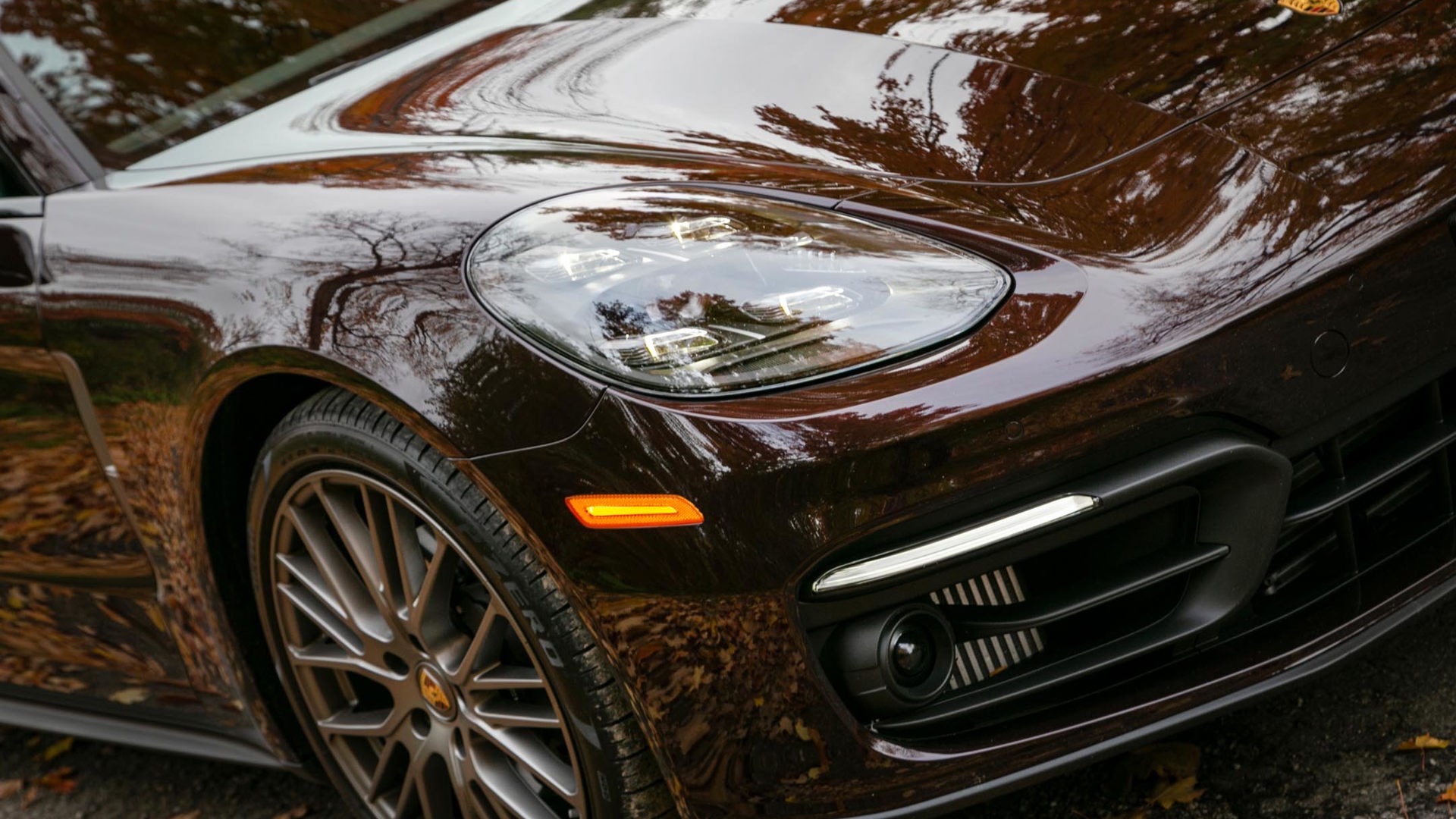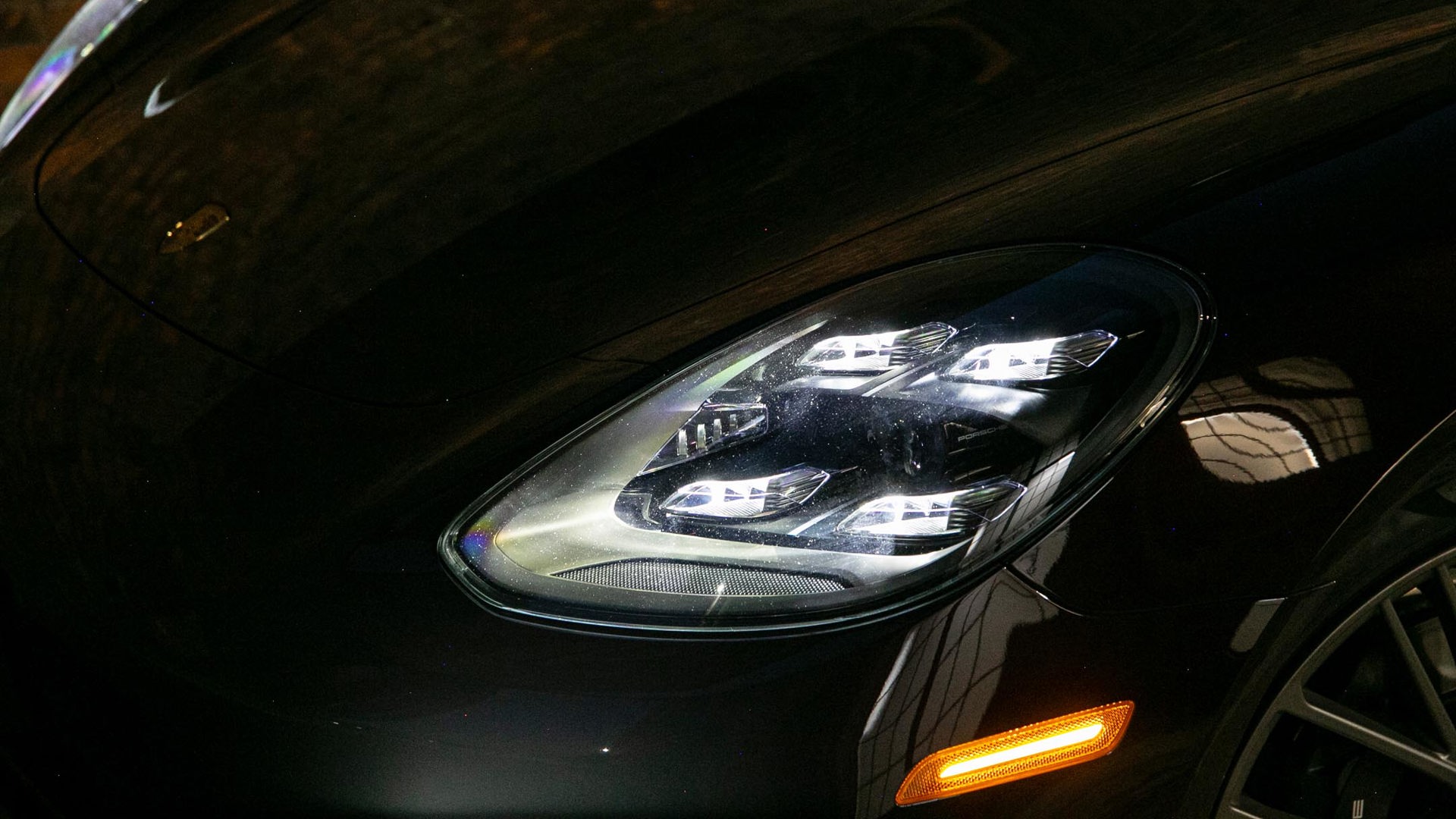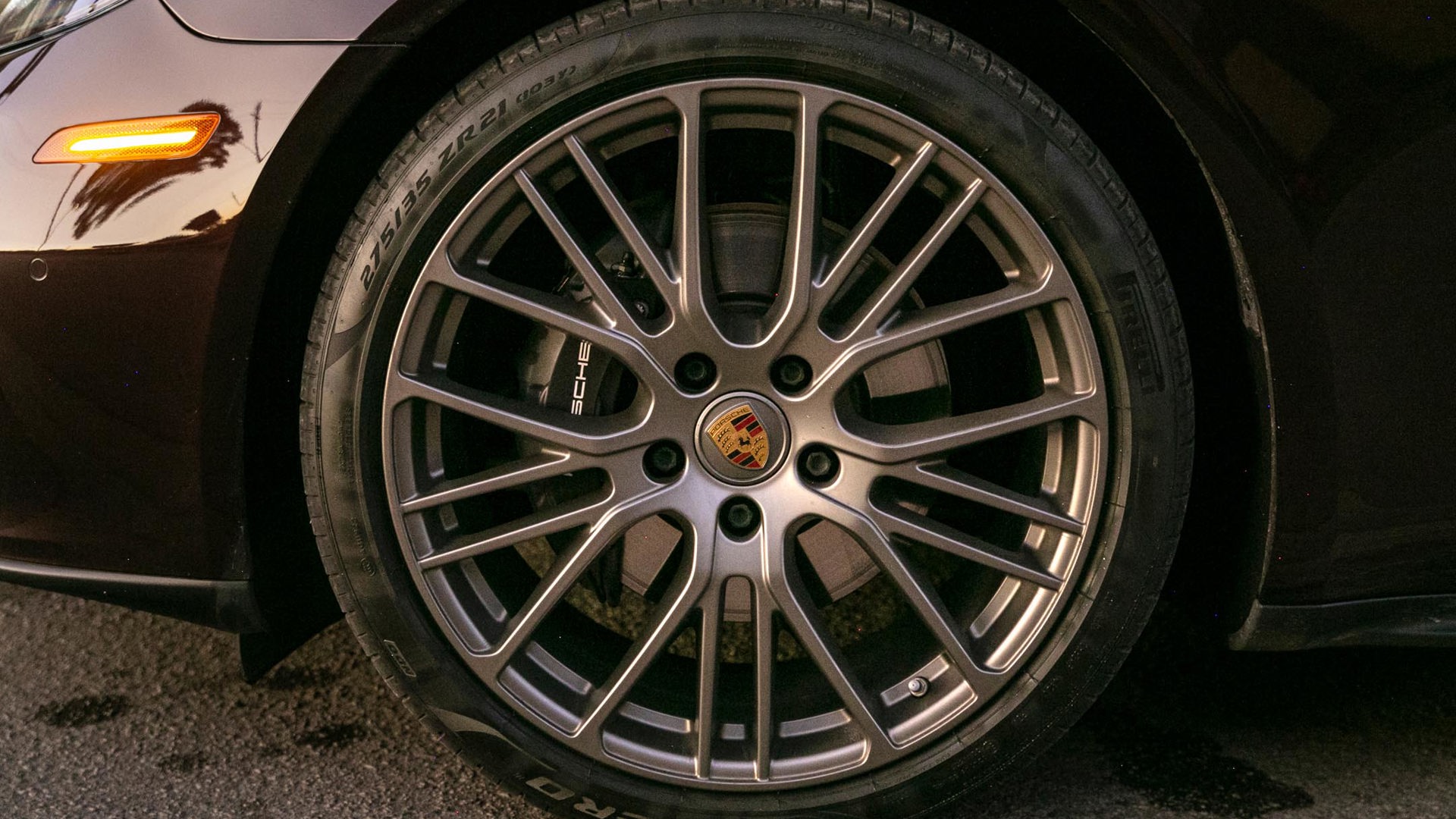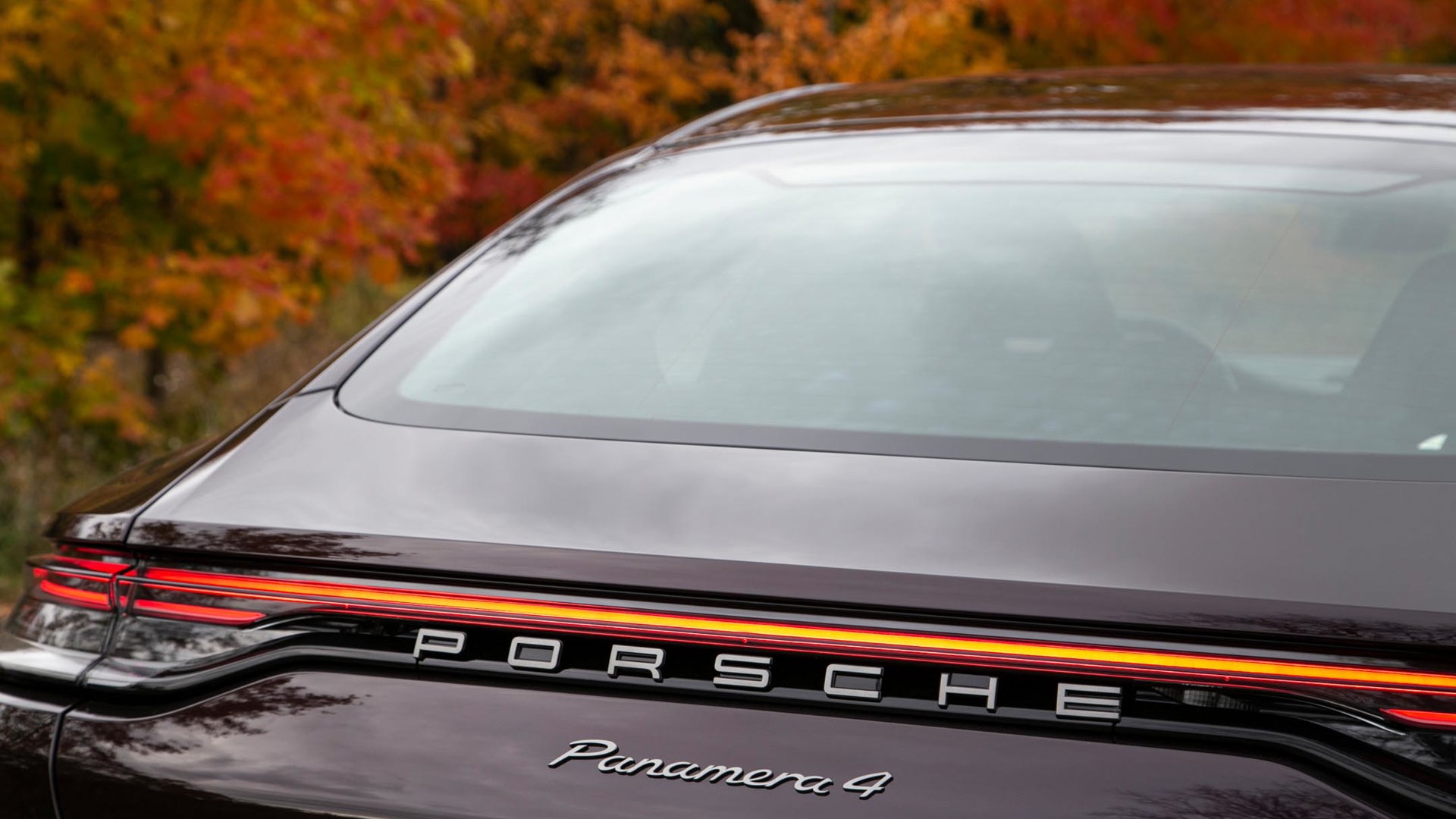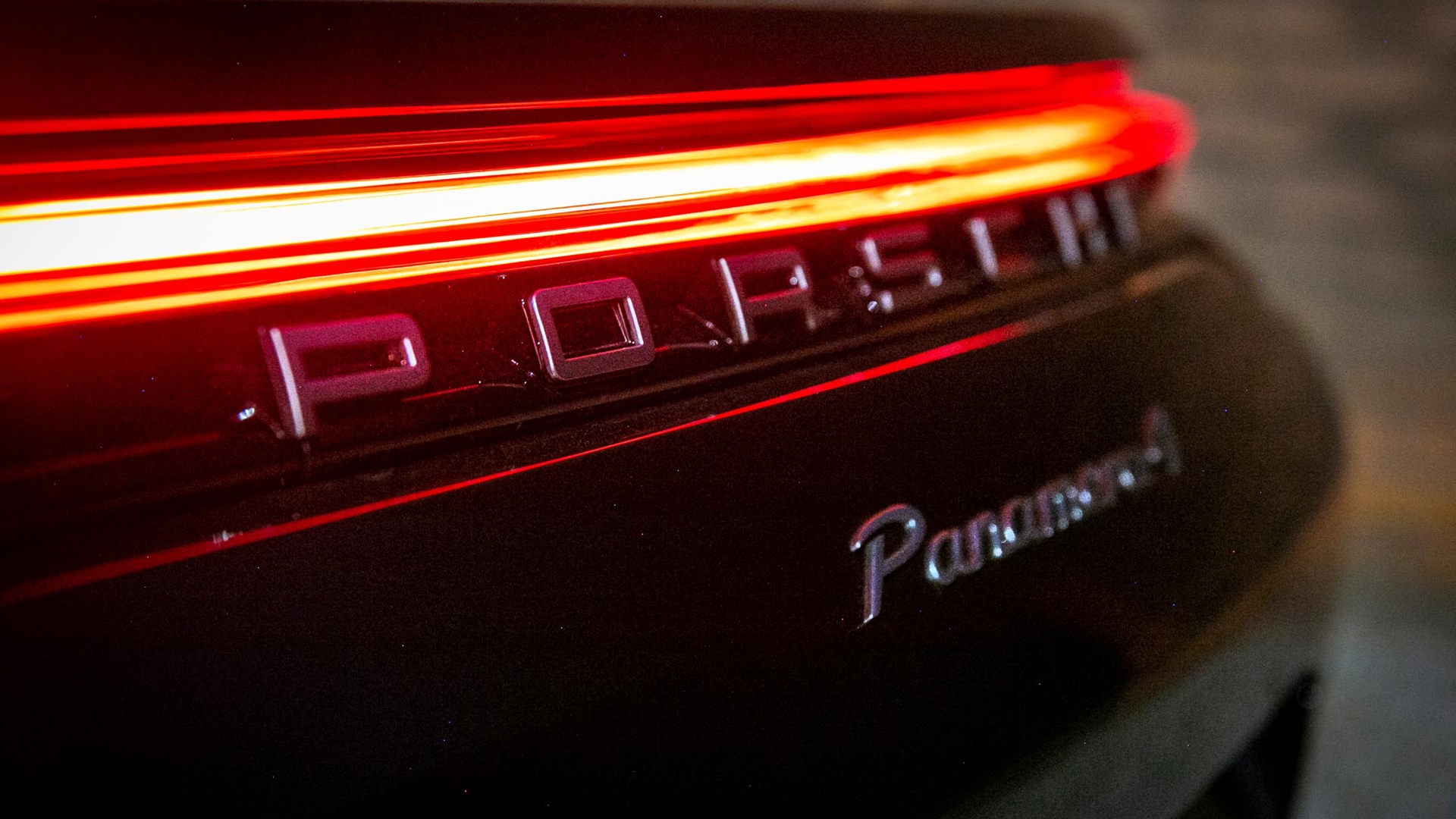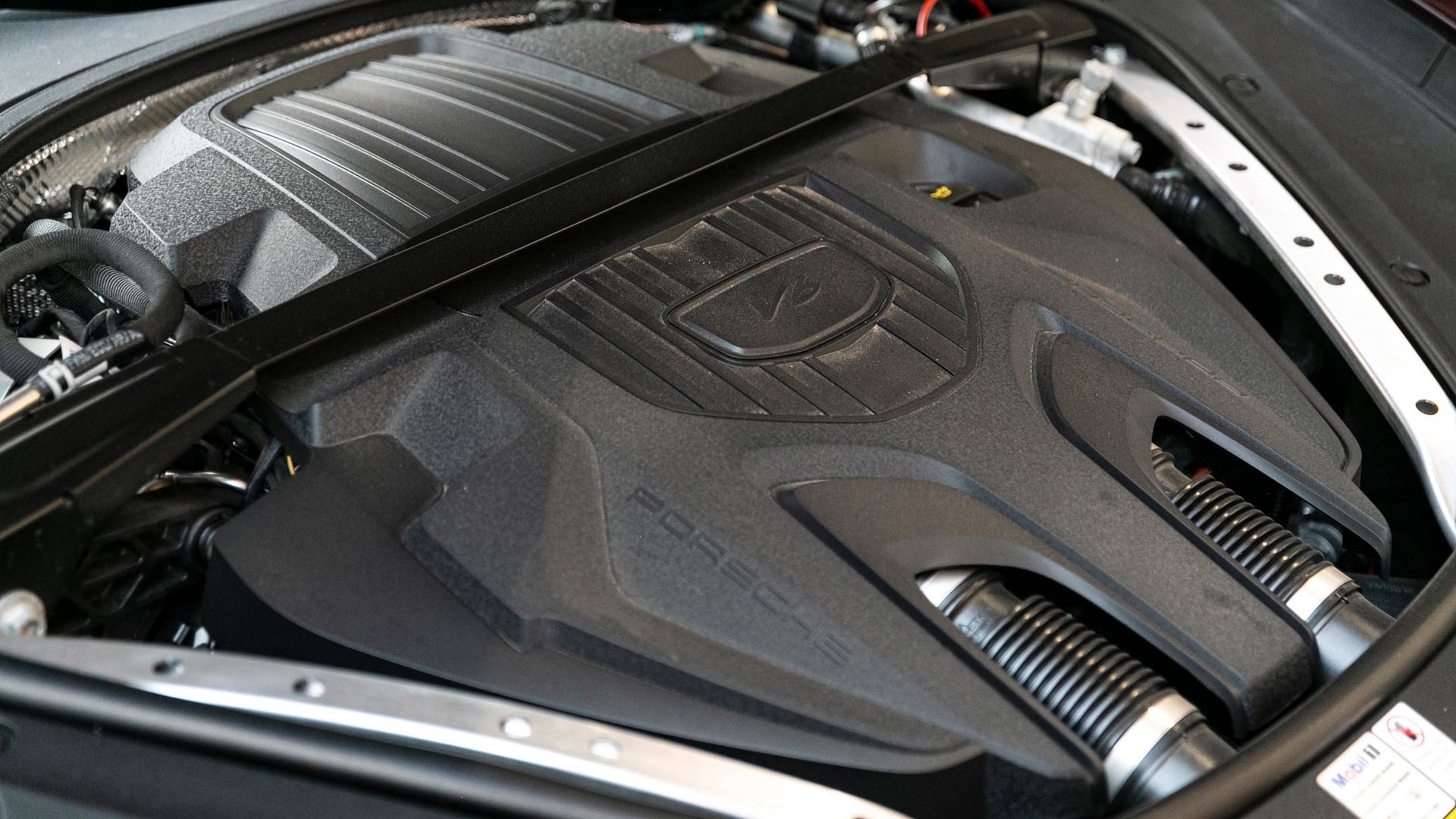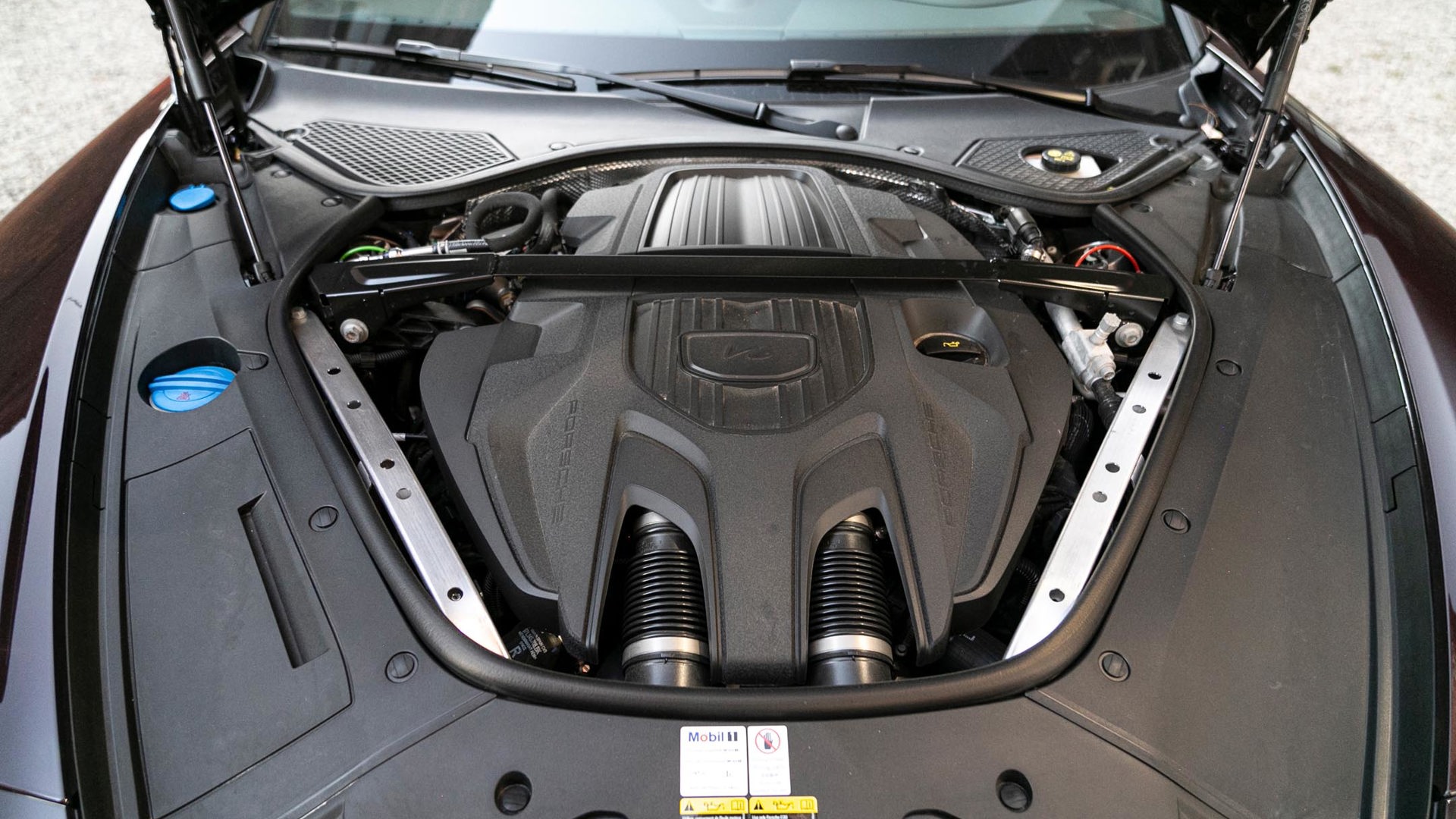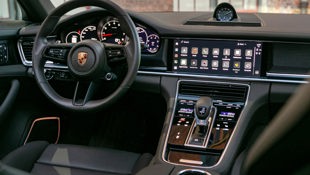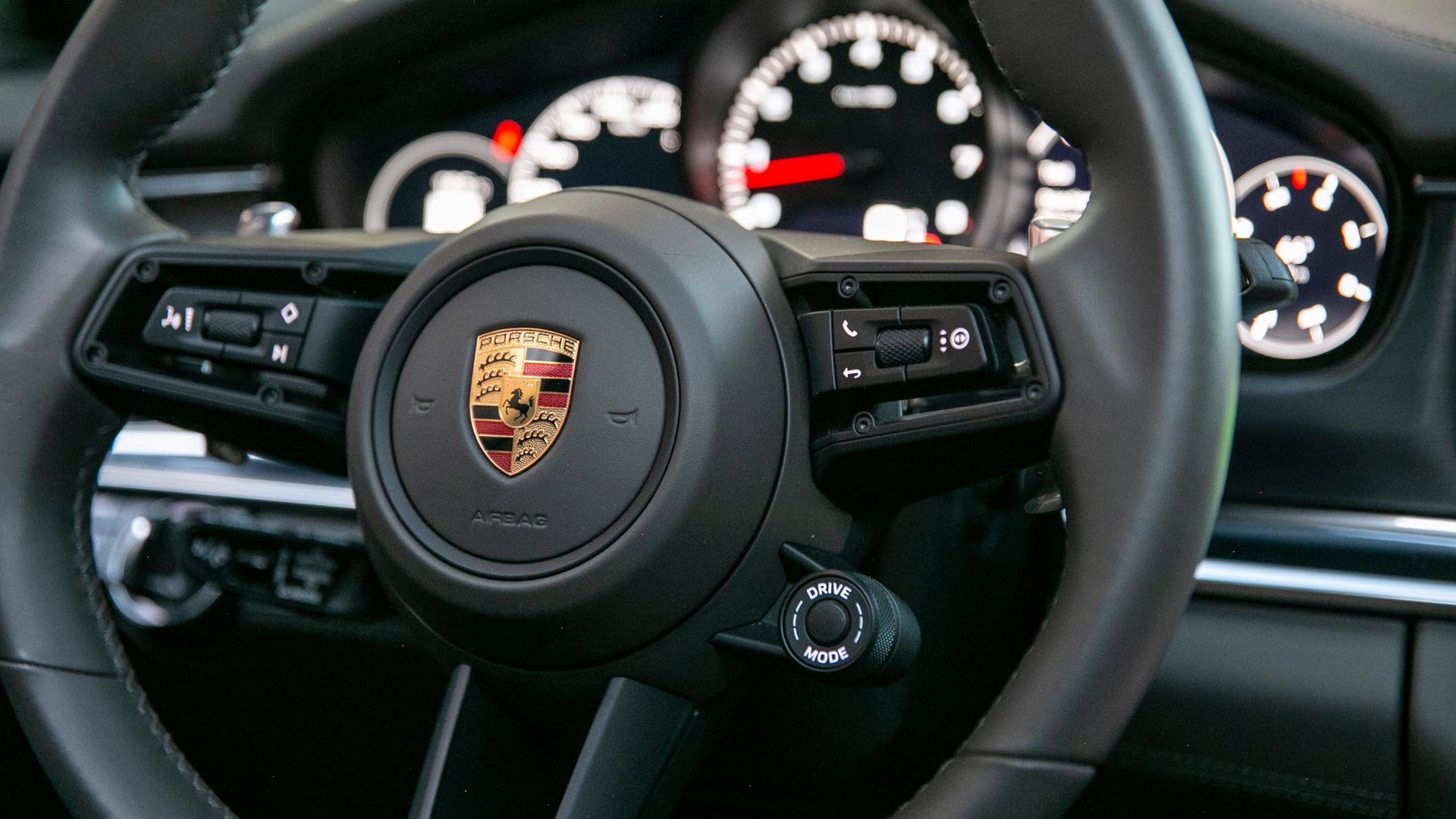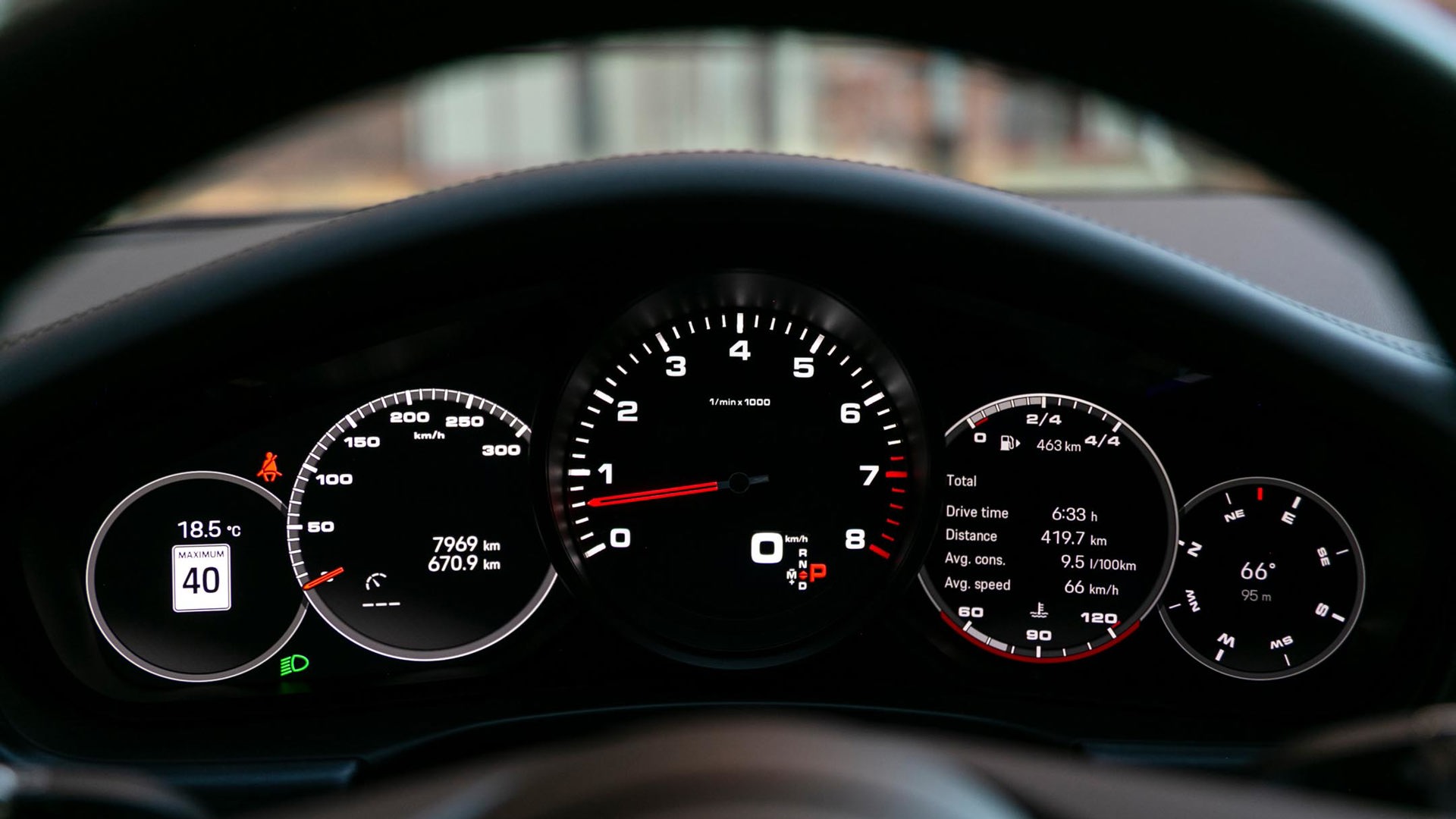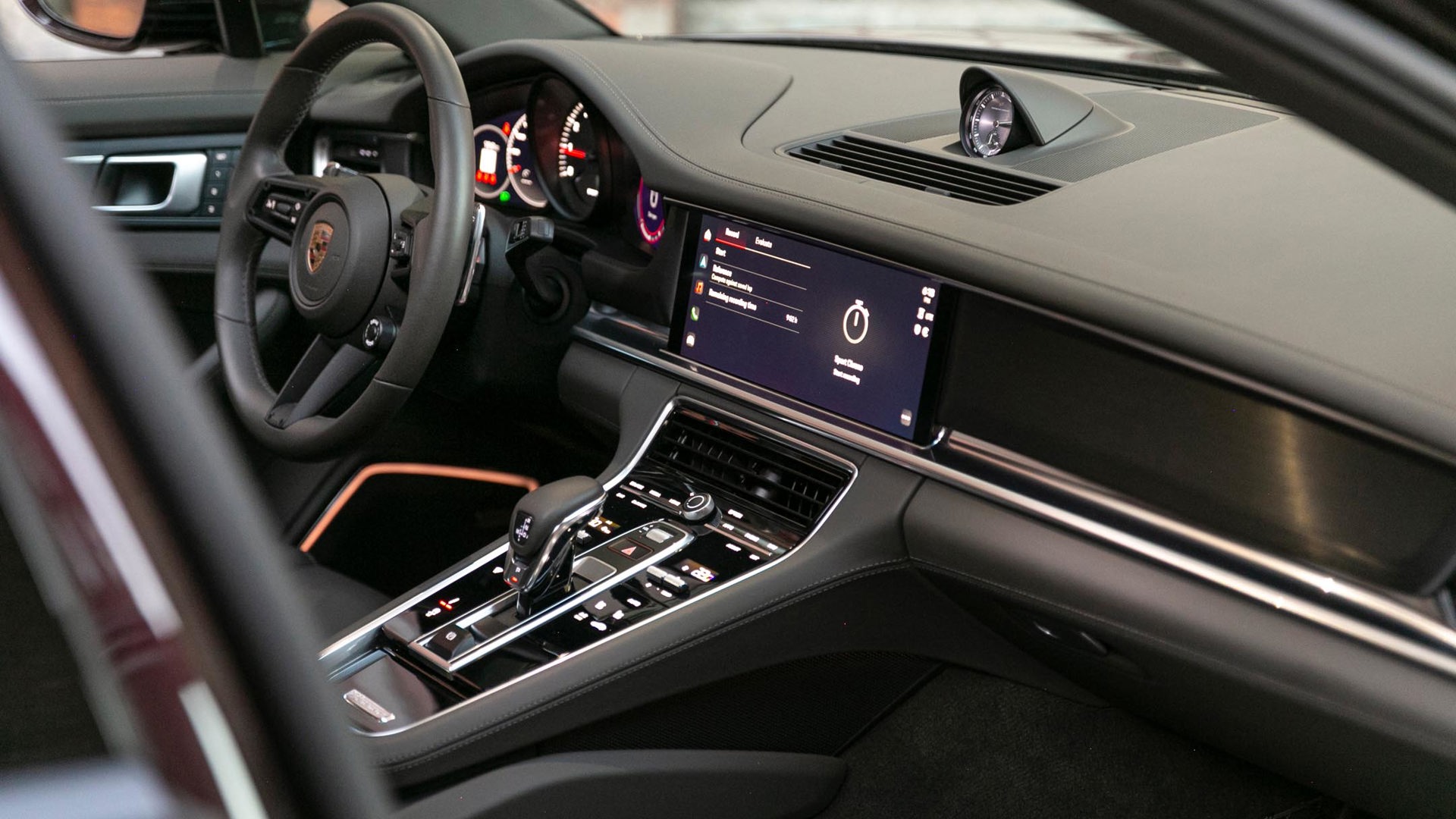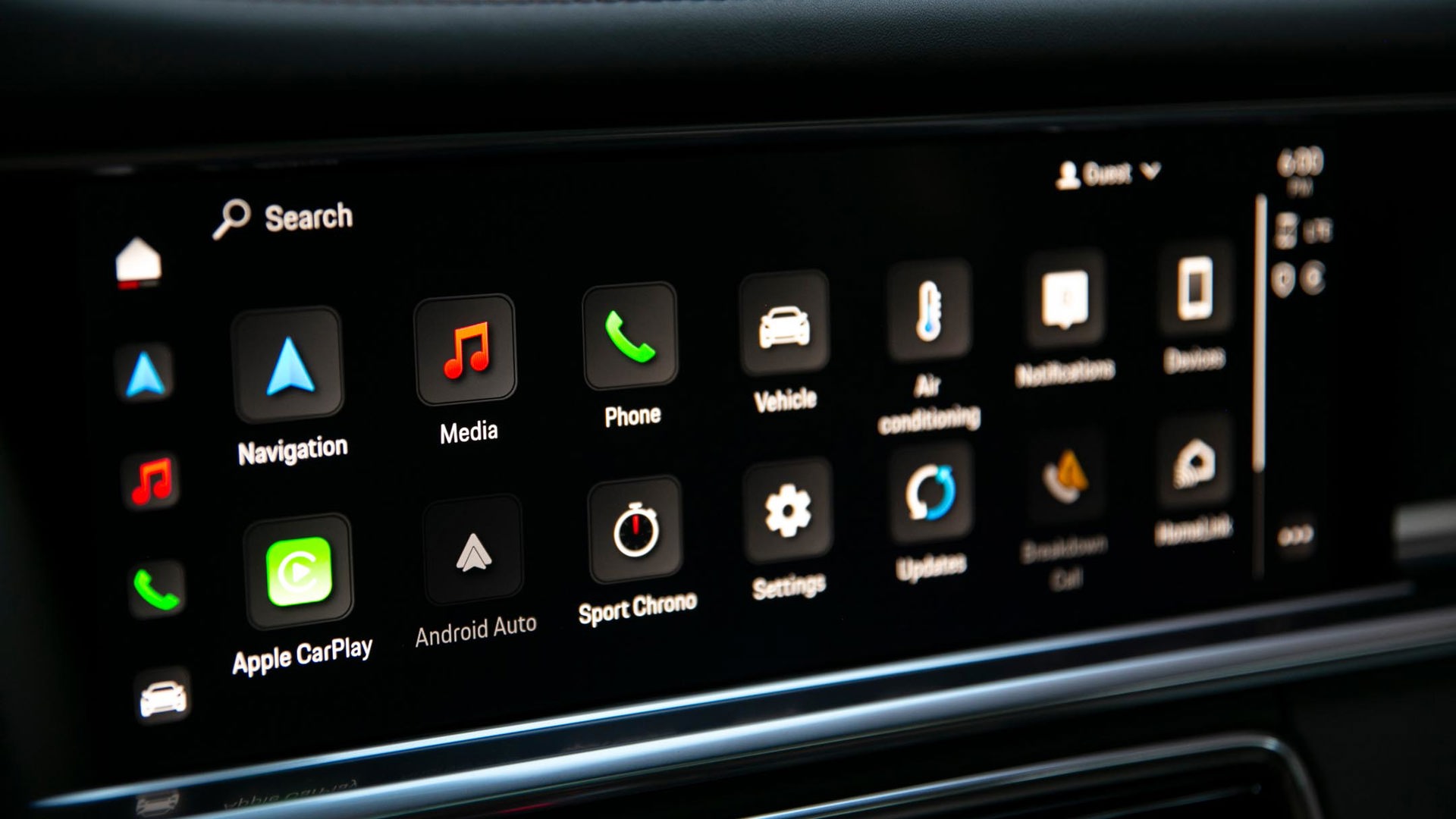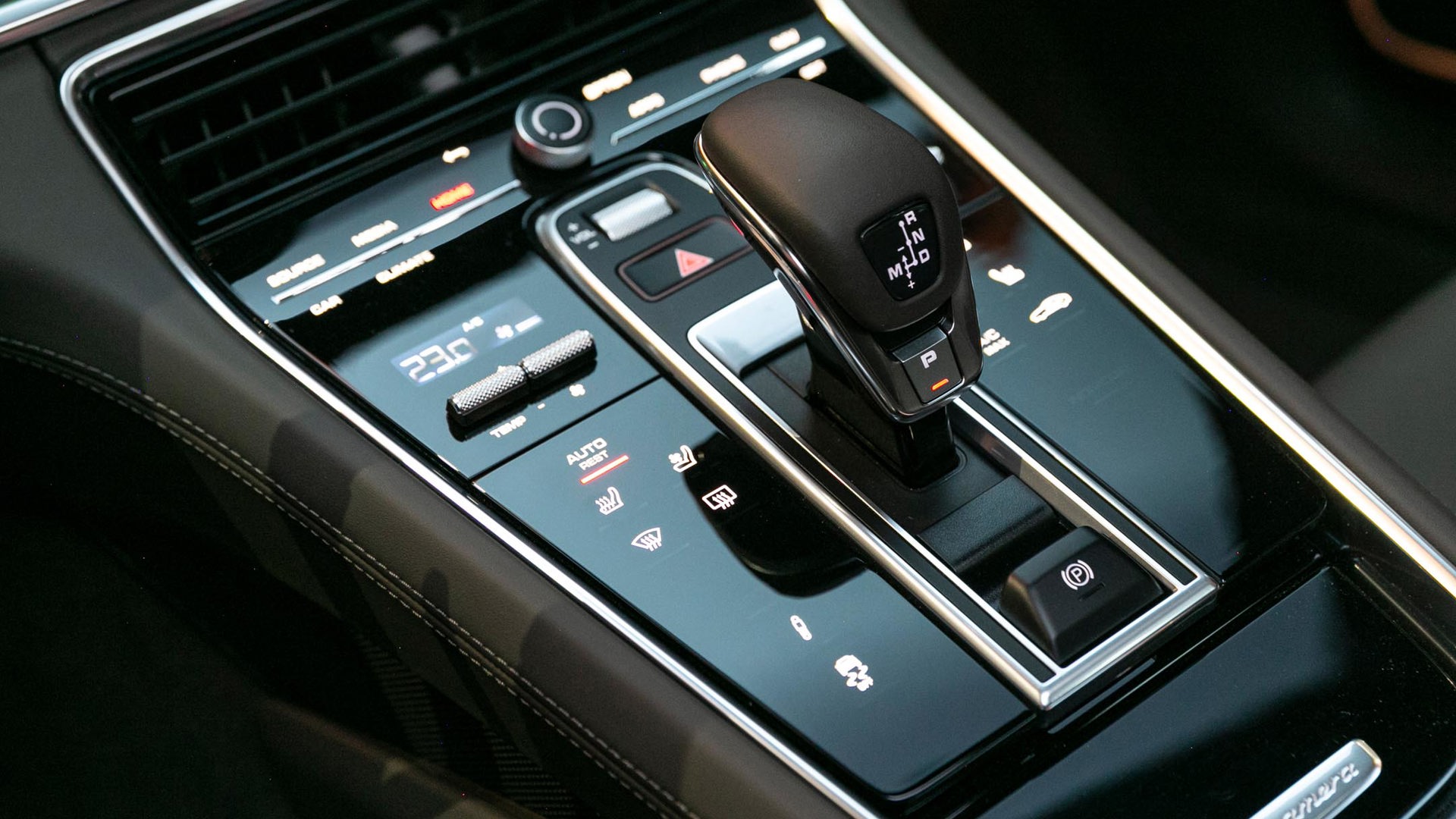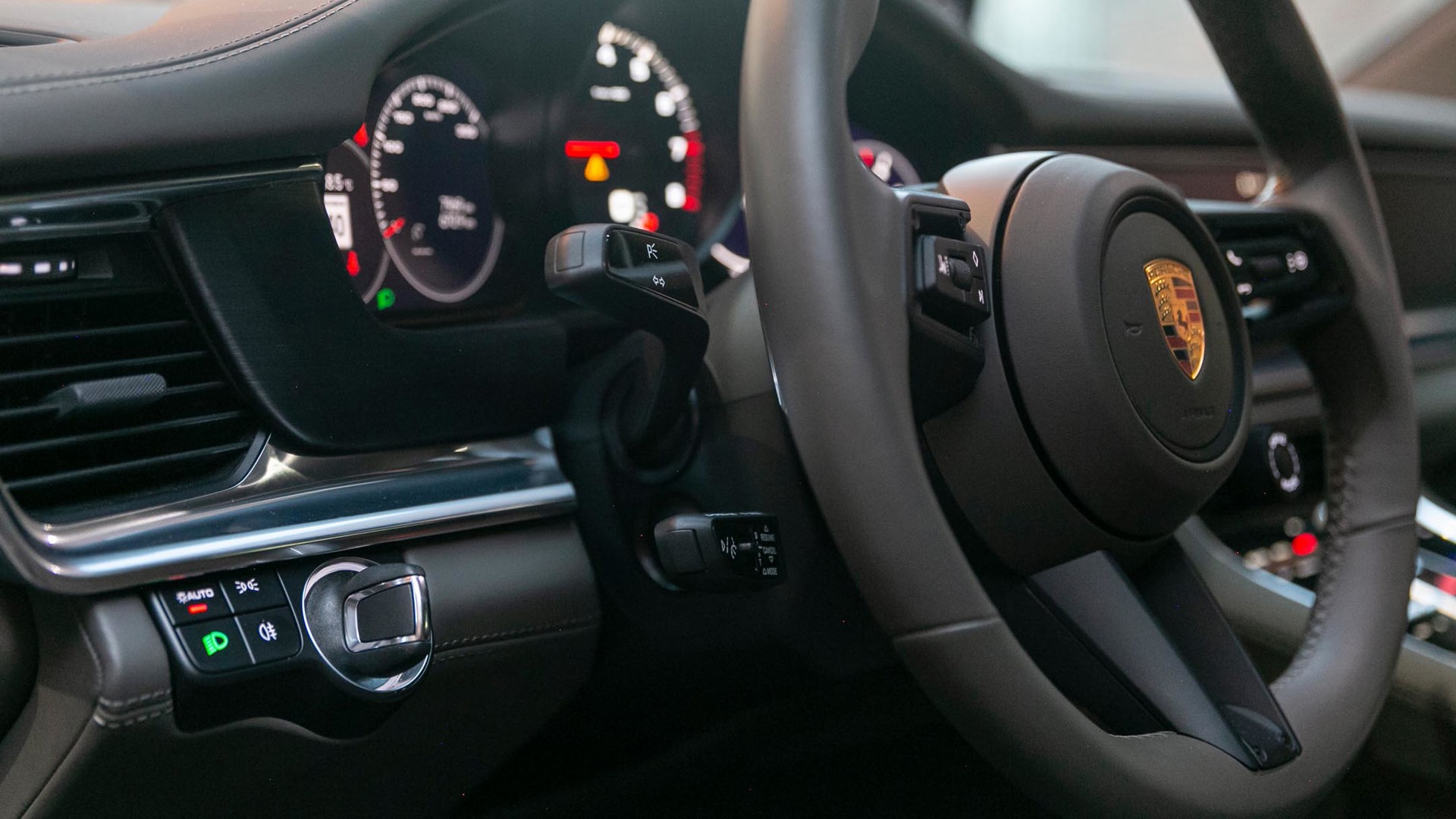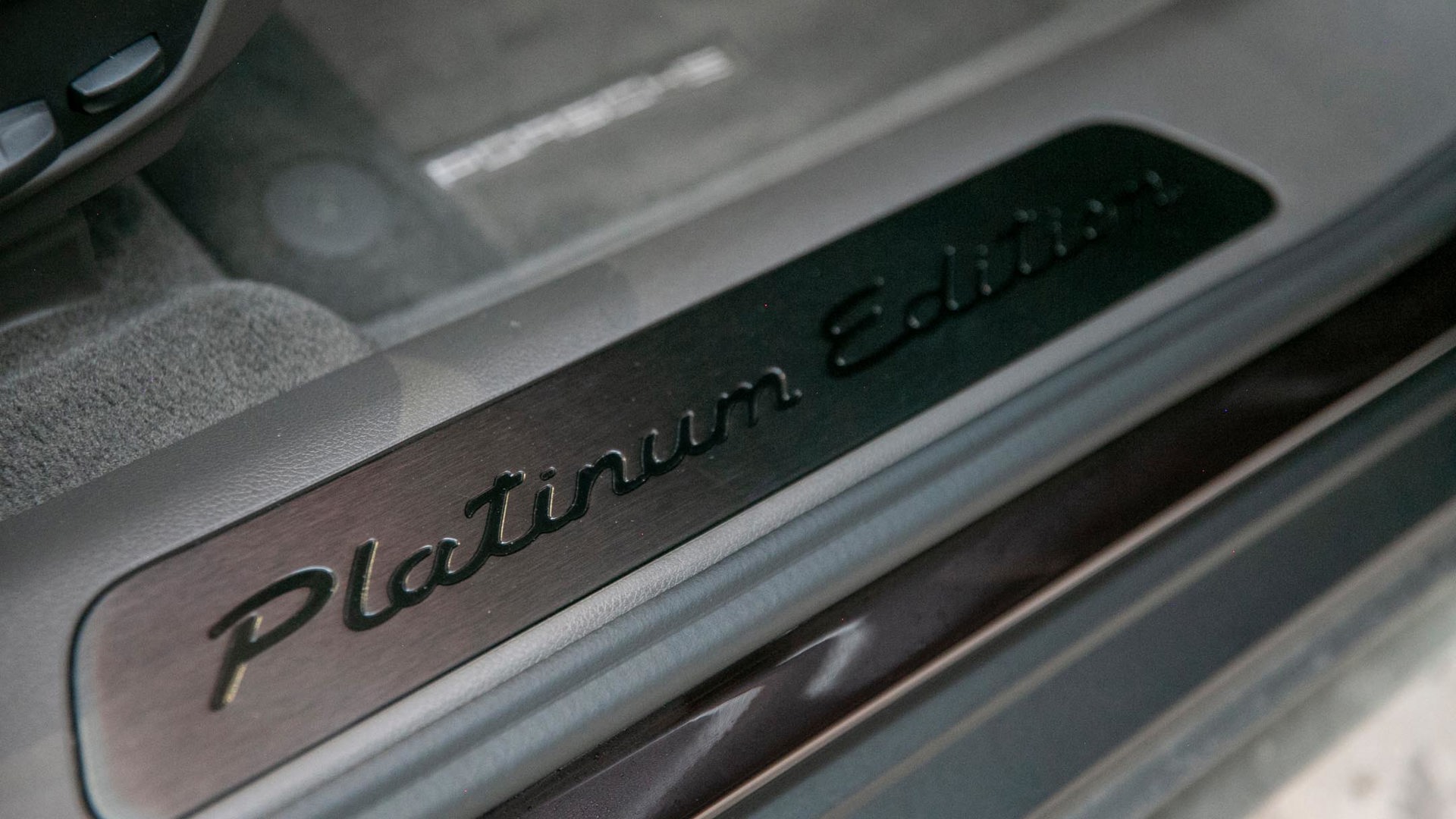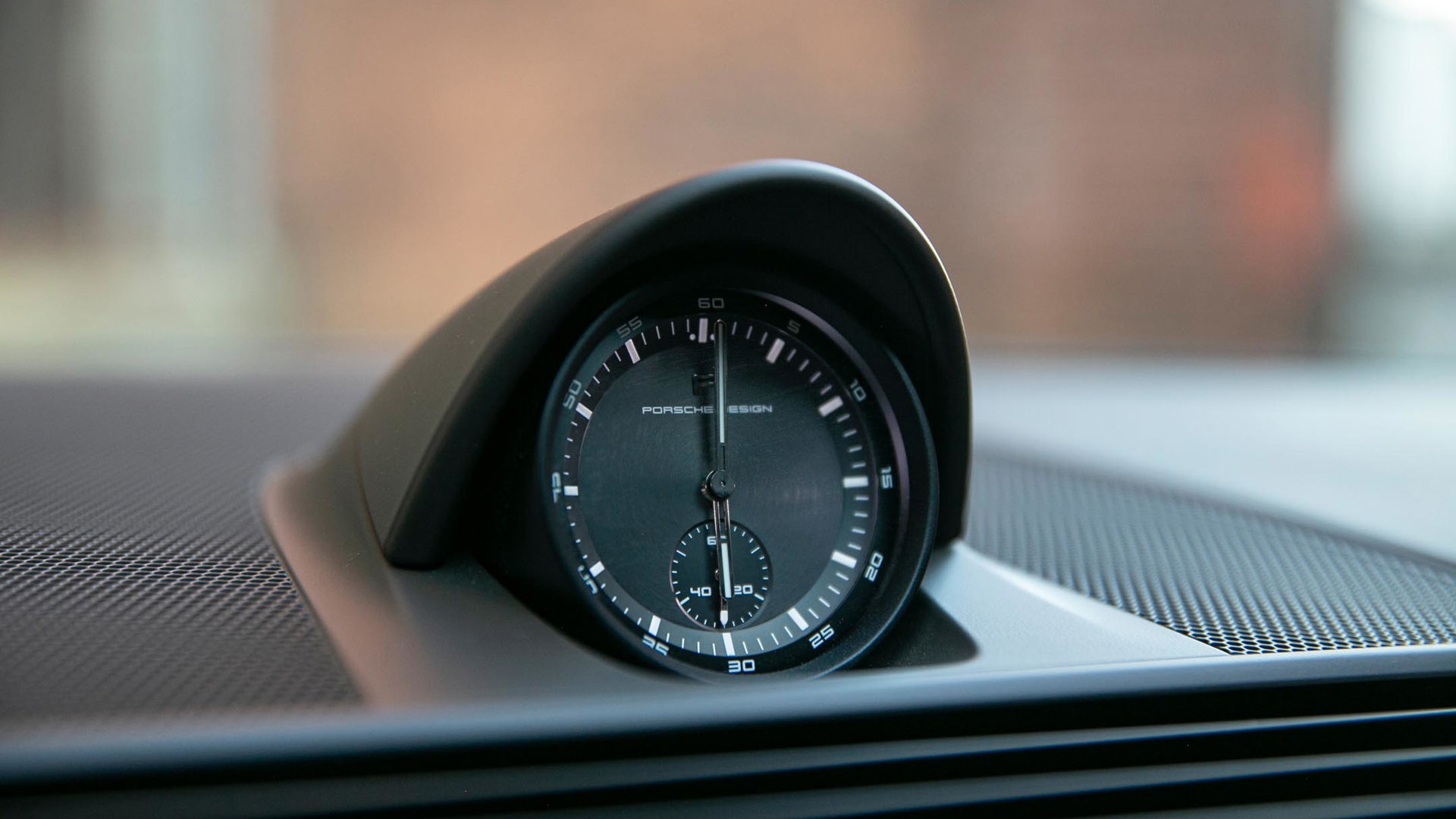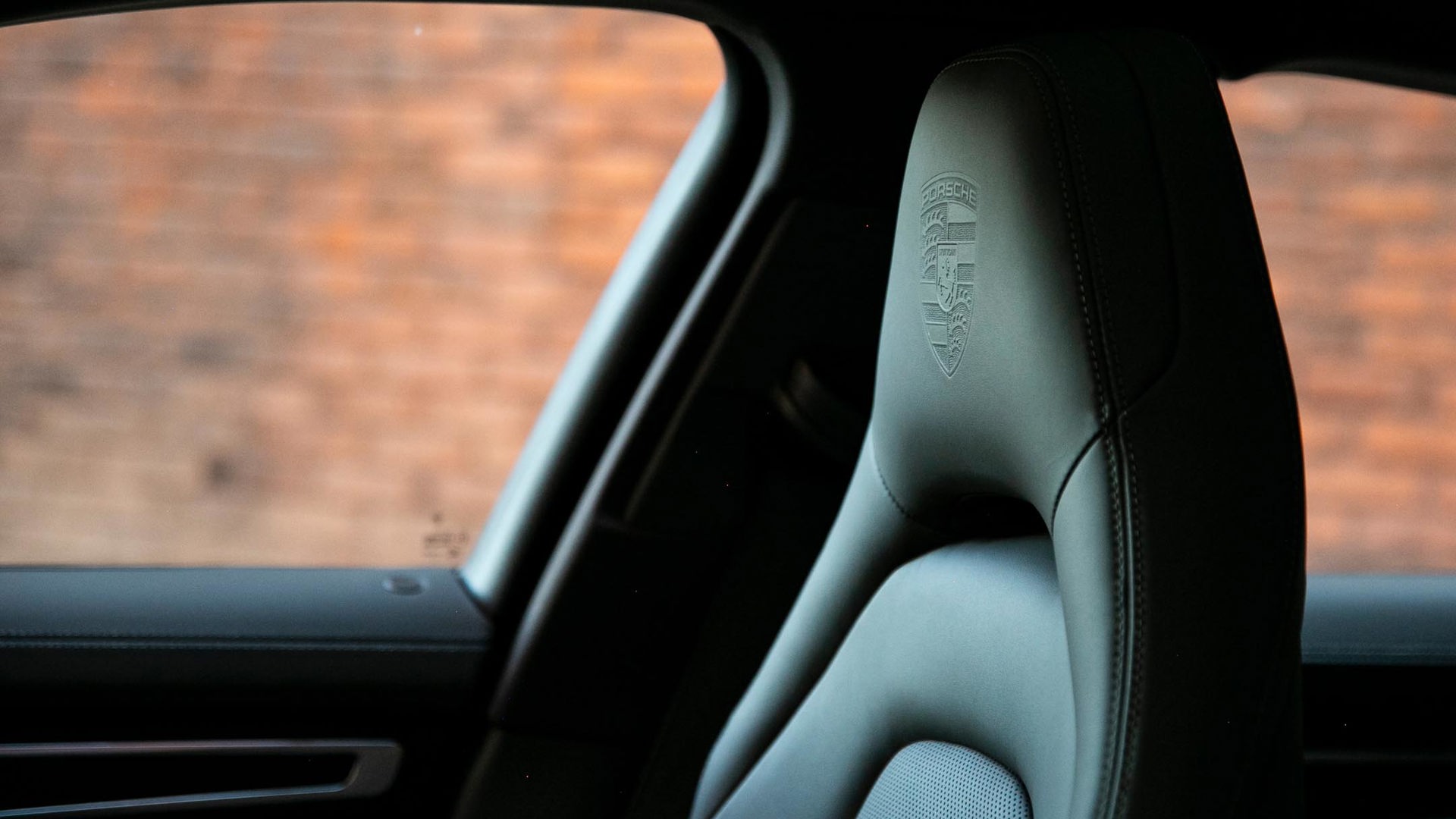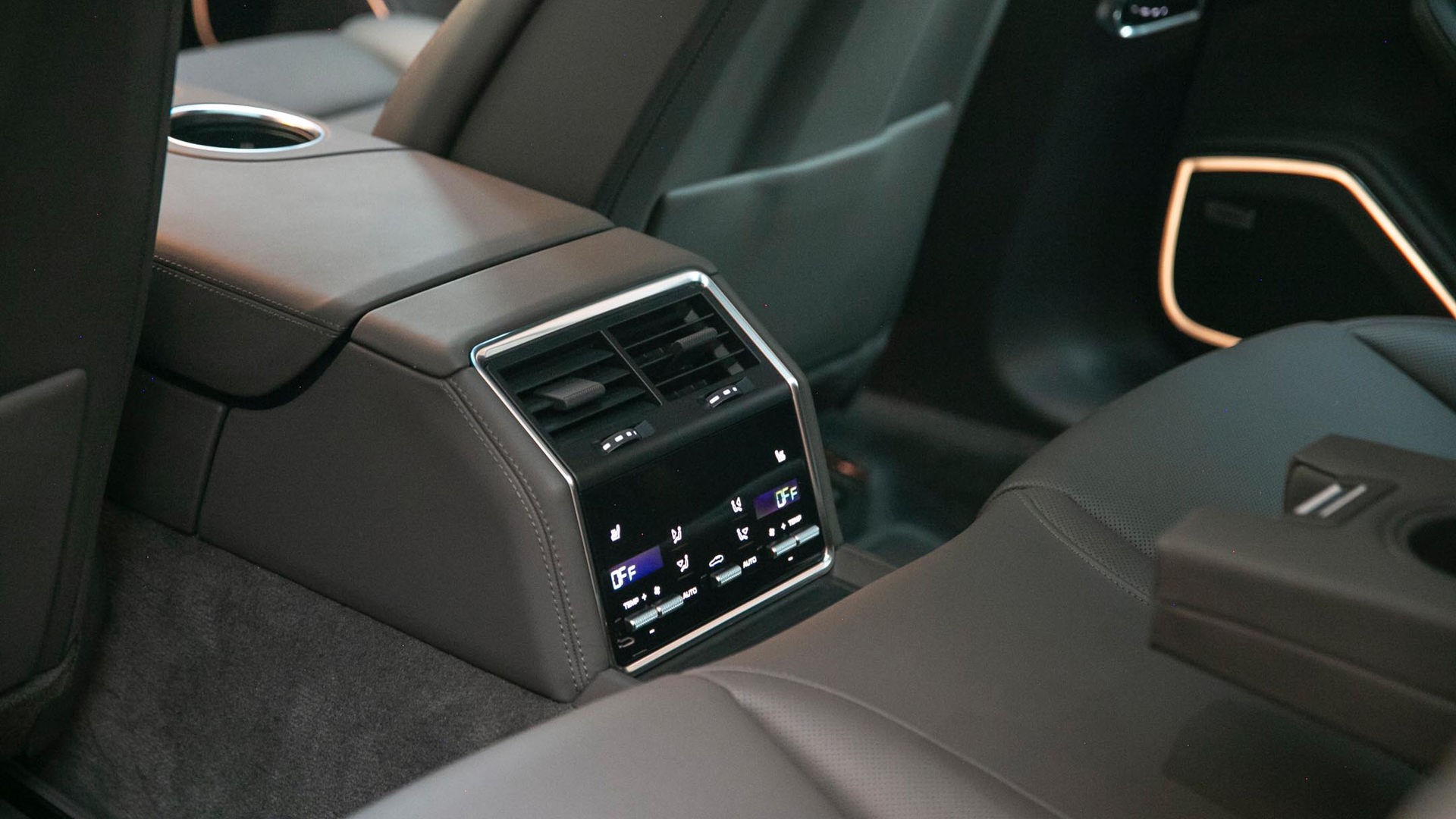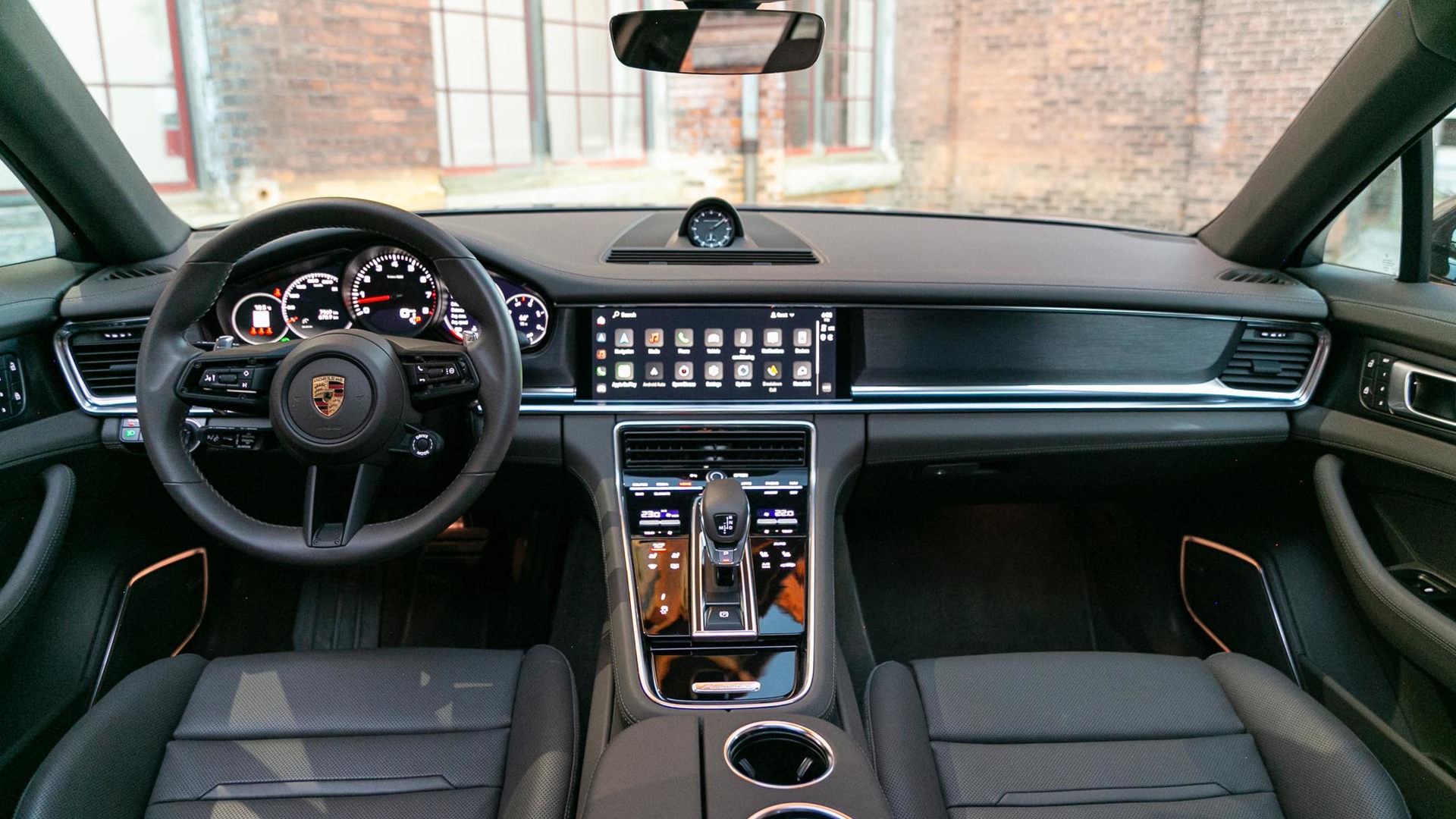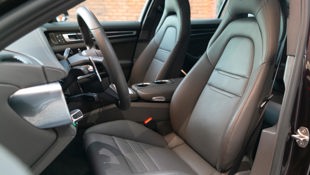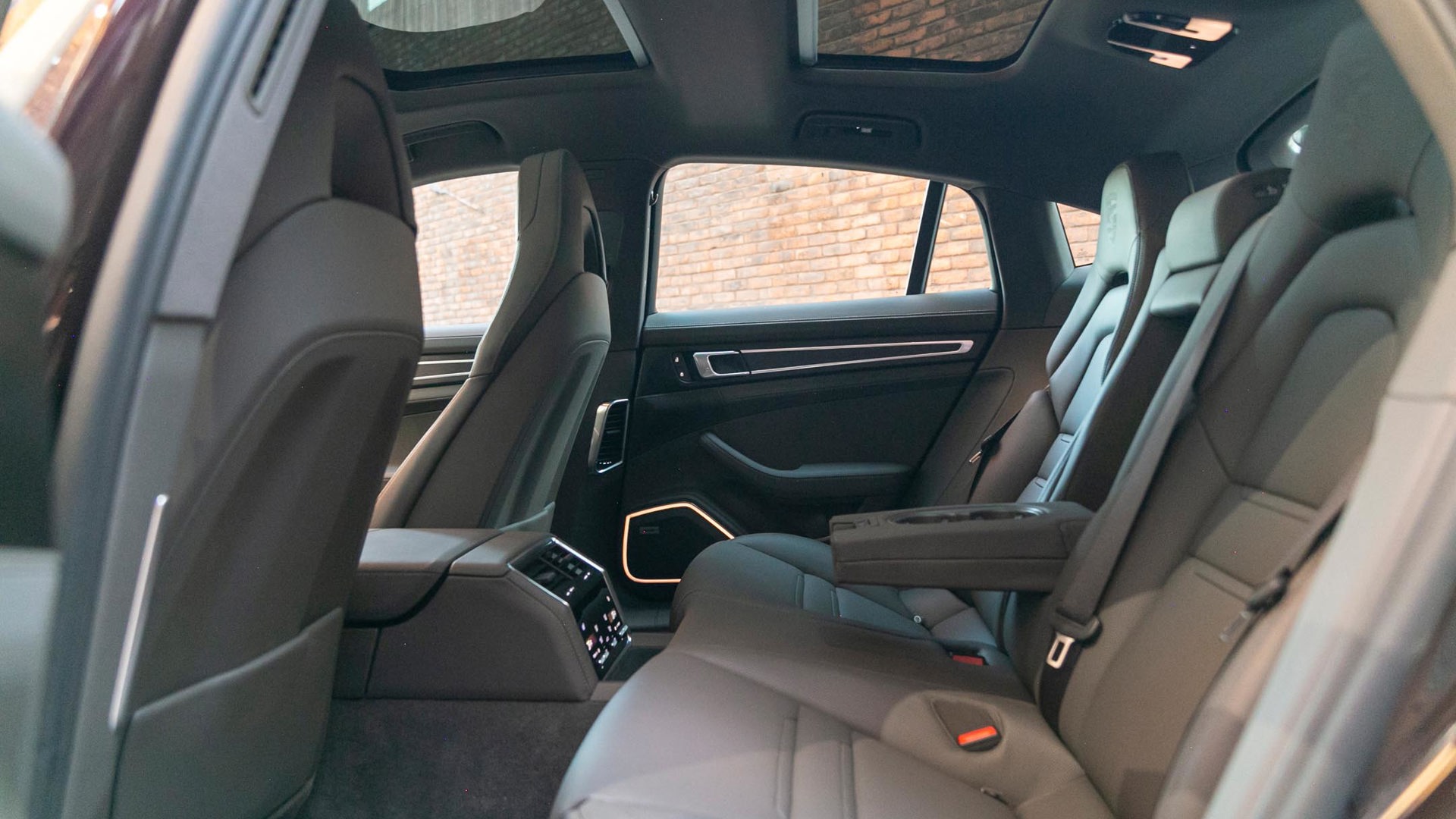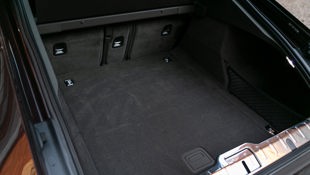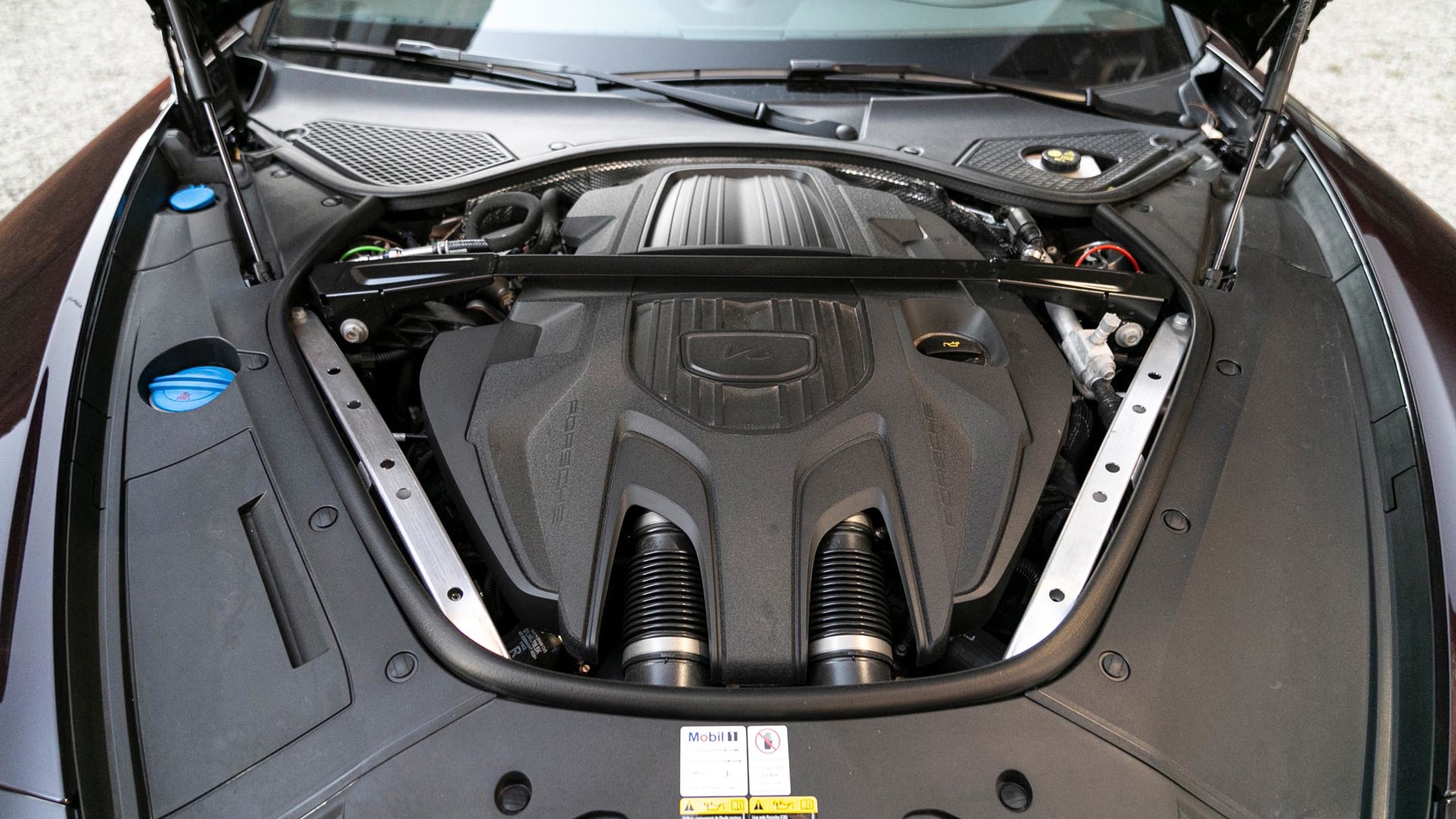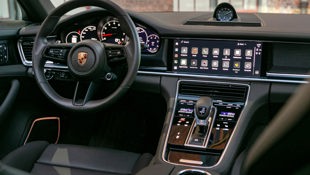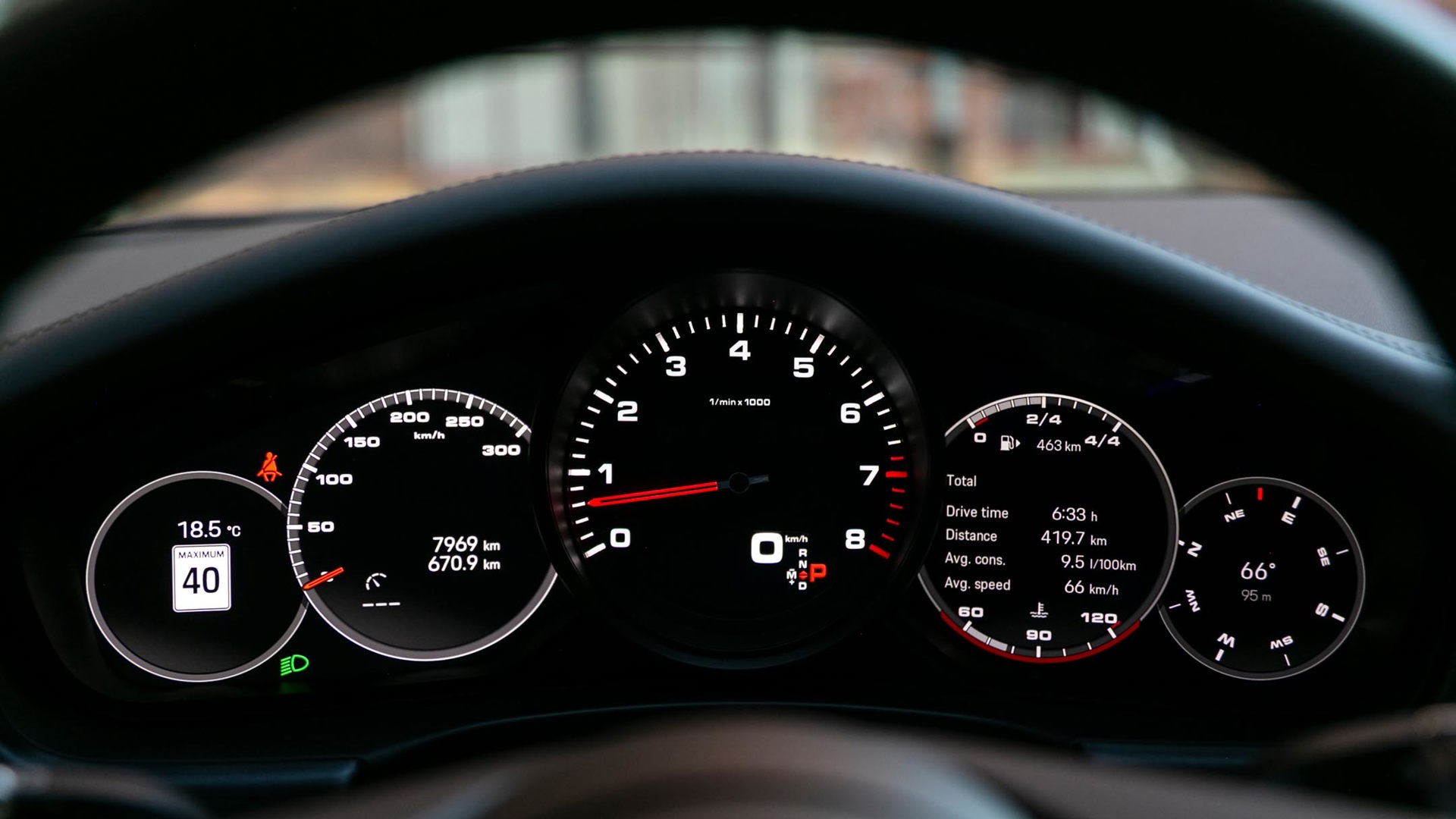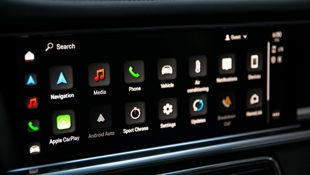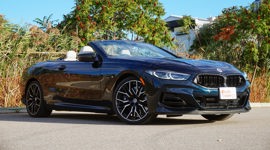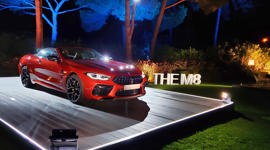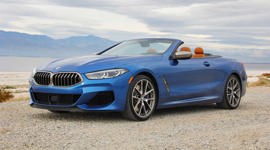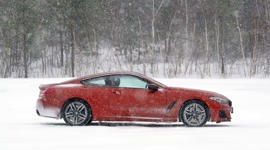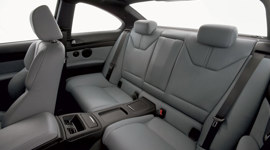 AutoTrader SCORE
AutoTrader SCORE
-
STYLING8/10
-
Safety6/10
-
PRACTICALITY7/10
-
USER-FRIENDLINESS7/10
-
FEATURES8/10
-
POWER7/10
-
COMFORT8/10
-
DRIVING FEEL8/10
-
FUEL ECONOMY7/10
-
VALUE6/10
With a half-German heritage, and being reasonably well-travelled, I have come to the conclusion that Germans are a proudly pragmatic bunch.
While making generalizations is generally verboten these days, a look at the cars from Germany suggest this is an apt one. And Porsches are perhaps the best representation of this businesslike approach to the automobile. For decades the company has matter-of-factly embraced the notion of its outstanding 911 being both well-built and practical enough to be used every day, even if that means throwing a ski rack on top and blasting through the snow to the lodge.
The luxury sedan you see here, the 2022 Porsche Panamera 4, is elegant and swift, but it’s also sensible. It’ll shuttle five occupants and their luggage, and, absurdly, it’s rated to tow 2,200 kg (4,850 lb ) – more than most small SUVs.
Practicality: 7/10
It’s unlikely most Canadian Panamera buyers are planning to pull their wake boats with these sedans, but it speaks to the usability it offers. Four passengers are treated to generous head-, leg-, and shoulder room; and although an $1,150 two-plus-one rear seat option was added to this tester, any poor sap stuck in the middle back there would be straddling the central tunnel. Still, it’d be a good spot to buckle in the Weimaraner between the two kids.
There’s nearly 500 L of cargo capacity beneath the very sensible liftback, and that space grows to 1,334 L if the rear seats are folded flat. Still not enough? Porsche offers the Panamera in Sport Turismo format that’s probably the sexiest station wagon on the planet. [The Porsche Taycan Sport Turismo has entered the chat. – – Ed.]
Comfort: 8/10
Those occupying the front (and rear outboard) seats in the Panamera are treated to sporty buckets with enough bolstering to keep them securely in place during spirited cornering, yet don’t feel confining or challenging to get in or out of. They’re firm yet remain comfortable for long highway hauls, and the multi-zone climate control should help ensure everyone’s optimal temperature is met. The seats are heated both front and rear, while the ones up front are also ventilated.
There’s a solidness about the Panamera that’s felt whether closing the doors, or as the car absorbs road imperfections. The ride quality is decent, but it’s firm enough not to be called supple, reminding passengers that this is a driver’s car first and foremost.
Features: 8.5/10
Along those lines, there’s little in the way of frivolity here. The leather that covers most surfaces throughout the cabin isn’t tufted into little patterns; there’s no star field of LED lights dancing across the twin-panel sunroof, and the seats don’t have a magic fingers feature like a 1970s motel bed. Instead, it’s a no-nonsense cabin impeccably finished with materials of an excellent quality. Even the Porsche Design clock atop the dash as part of the Sport Chrono package is a luxury accoutrement that’s still a highly functional component.
Onboard navigation, a premium sound system, adaptive cruise control, and parking sensors are all here, but the latter two add thousands of dollars to the price sheet. Many of the notable features are tied into the driving experience, like the sophisticated adaptive suspension or the rear-axle steering system that contribute to the performance of the car instead of its poshness.
Safety: 6/10
The Panamera’s driving capabilities will hopefully help drivers steer clear of dangerous incidents – especially since most of the advanced safety features found in most mainstream models these days are absent or expensive additions with Porsche. Even so, with the adaptive cruise control comes a host of forward-looking sensors tied into autonomous emergency braking functions, and the optional adaptive LED headlights do a sensational job of illuminating dark country roads.
User-Friendliness: 7/10
Earlier Panameras had a centre console so packed with buttons that it looked like a full keyboard. While some griped about it, I found it to be both attractive and functional. Alas, these days filling a cockpit with as many glass controls and screens as possible is the trend, and that’s what Porsche has done here.
The capacitive panels flanking the gear selector look slick until they’re actually used and become a haven for smudged fingerprints. While the large touchscreen for the infotainment system suffers the same fingerprint affliction, it’s a well thought interface offering easy navigation through the menus and quick response to inputs. Wireless Apple CarPlay worked flawlessly during the test week, and while Android Auto is available, too, it only works through a cable.
The cockpit layout is very much driver-centric and all the controls are within easy reach. The outward visibility is very good, too.
Power: 7.5/10
In some trims, the Panamera is a fiercely powerful beast. The GTS version reviewed last year featured a 4.0L V8 that dispensed with plenty of power and torque, but this more affordable Panamera 4 is motivated by a 2.9L twin-turbocharged V6 with 325 hp and 331 lb-ft of torque. While not exactly paltry numbers, there’s 1,900 kg (4,189 lb) of car to move, so the Panamera 4 is quick but not thrilling the way some other Porsche models are.
The engine likes to rev and the driver is rewarded with a tearing snarl and smooth power delivery. Passing is still no problem for the Panamera, but with more of the population having experienced electrified driving experiences with their hair-raising immediacy and fierce thrust, the small-ish V6 feels quaint by comparison.
Porsche’s eight-speed dual-clutch automatic does a great job when really hustling the Panamera in sport mode, where the gear changes are blazing quick, but it’s not as smooth a transmission as some competitor units. And in normal driving mode the transmission always seeks higher gears in the name of efficiency, which can cause a moment’s pause while a few cogs are shifted, the turbos spool up, and then the power comes on.
Fuel Economy: 7/10
The Panamera employs an ignition stop-start function that’s possibly the most aggressive of its kind. When slowing, before even reaching a full stop, the engine will shut down. At stop signs or when slowly cruising around a parking lot, it grows tedious always waiting for the car to restart with a little hiccup. Rarely do I switch these systems off when testing new vehicles, but I did so here.
Those seeking greater efficiency have plenty of options from Porsche, including hybrid versions of the Panamera (and other models), or the full-electric Taycan. Even still, after a full week of driving, I saw an indicated average of 9.5 L/100 km, which is quite good for a full-size performance sedan. It’s also better than the published average highway rate of 9.8 L/100 km.
The government rates the Panamera 4 at 12.8 L/100 km in the city and 11.5 combined. Premium fuel is required, and its massive 90-L tank allows for impressive highway range.
Driving Feel: 8.5/10
Walking around the Panamera, it’s a long car, and yet from behind the wheel it seems to shrink around the driver. Equipped with large, sticky summer tires and all-wheel drive, plus Porsche’s optional rear-steer function, the Panamera can be a far more nimble car than anything with a nearly 3,000-mm 118.1-in) wheelbase has any right to be. Nobody will mistake it for a Cayman when ripping around a race track, but the big sedan can still be tremendously fun to take the long way home and hit up some favourite backroads along the way.
But where the Panamera 4 really excels is as a highway cruiser, where its lower power output doesn’t matter, and its adaptive suspension can be set to its comfiest setting and the car simply devours miles effortlessly and with unflappable stability. [You mean kilometres, Jeff… – Ed.]
Styling: 8/10
The Panamera’s appearance has always stood out compared to the other, more traditional luxury sedans in the segment. It’s always been a bit more rounded and shared plenty of design traits with the 911, and that’s what makes the Panamera an unmistakable Porsche. And while the current generation is decidedly more sleek than the bulbous first generation, it’s still a functional design that leaves plenty of space for its occupants.
The deep red paint of the test car was immaculately applied, and the Platinum Edition trim eschews chrome for black and (fittingly) platinum-coloured accents and wheels. Its size also makes it more imposing in real life than its photos suggest. Inside, the brand familiarity carries over, and owners with a Cayenne, Macan, or 911 already in the garage will feel right at home inside the Panamera.
Value: 6.5/10
That Porsche style and familiarity is bound to increase the Panamera’s desirability amongst the brand’s faithful customers who will find this exceptionally well-built car a solid value. There is a sense of careful engineering and overbuilt quality that seems lacking in so many facets of modern life where short product lifespans and disposability are prevalent. The Panamera, however, feels like it has been built to endure.
Still, those comparison-shopping will note that for the $140,000 this example costs, a buyer could instead choose a BMW M850i Gran Coupe, Mercedes-AMG GT 53 Coupe, or Audi S7 for significantly less money and get a lot more power.
The Verdict
Early impressions of the 2022 Porsche Panamera 4 left me wondering why a buyer might choose this car over some of its more powerful competitors. But after more time spent with the car, the quality, capability, and functionality become increasingly endearing, and I found myself appreciating it on a very pragmatic level. The Panamera 4 is a bona fide luxury cruiser that has the ability to attack corners in a playful manner that few of its competitors can do. Buying a Porsche is a purchase of passion, but the Panamera shows it can be a practical one, too.
| Engine Displacement | 2.9L |
|---|---|
| Engine Cylinders | Twin-turbo V6 |
| Peak Horsepower | 325 hp @ 5,400–6,400 rpm |
| Peak Torque | 331 lb-ft @ 1,800–5,000 rpm |
| Fuel Economy | 12.8 / 9.8 / 11.5 L/100 km cty/hwy/cmb |
| Cargo Space | 495 / 1,334 L seats up / down |
| Model Tested | 2022 Porsche Panamera 4 Platinum Edition |
| Base Price | $123,100 |
| A/C Tax | $100 |
| Destination Fee | $1,750 |
| Price as Tested | $139,970 |
|
Optional Equipment
$15,020 – Leather interior, $4,330; Rear-Axle Steering, $1,530; Rear Seat 2+1 configuration, $1,150; ParkAssist, $1,050; Dynamic LED Headlights, $700; Adaptive Cruise Control, $2,570; Sport Chrono Package, $3,690
|
|
